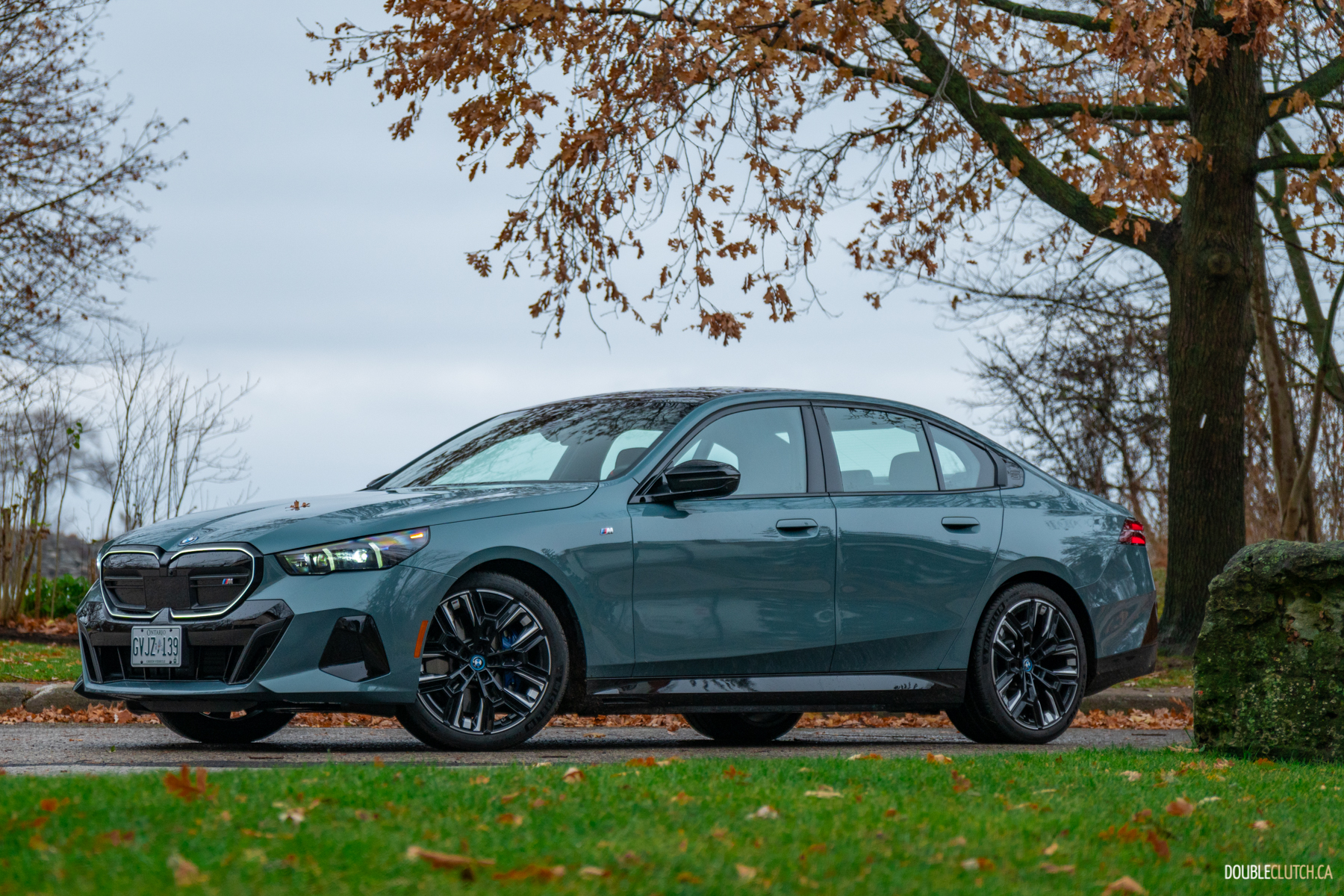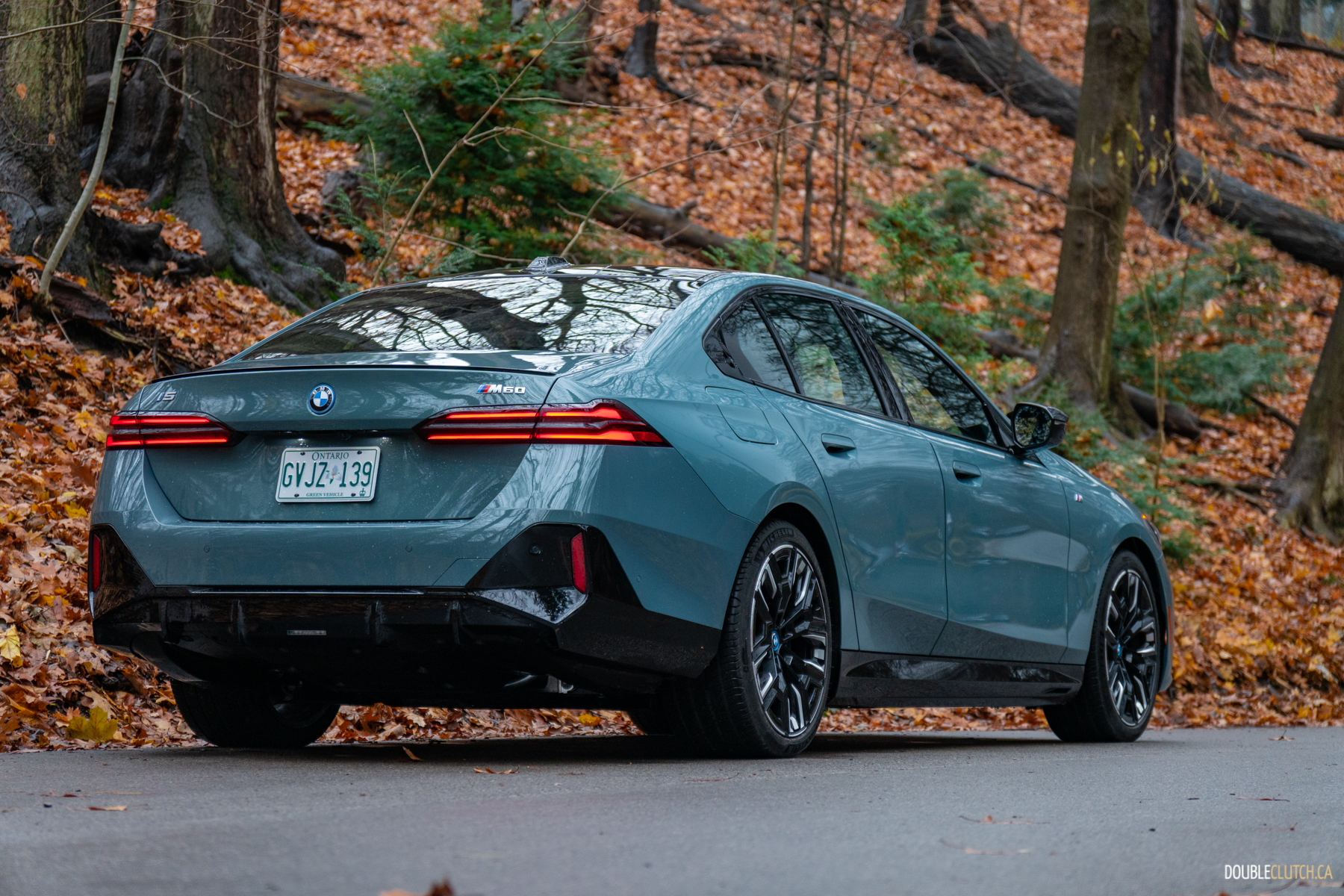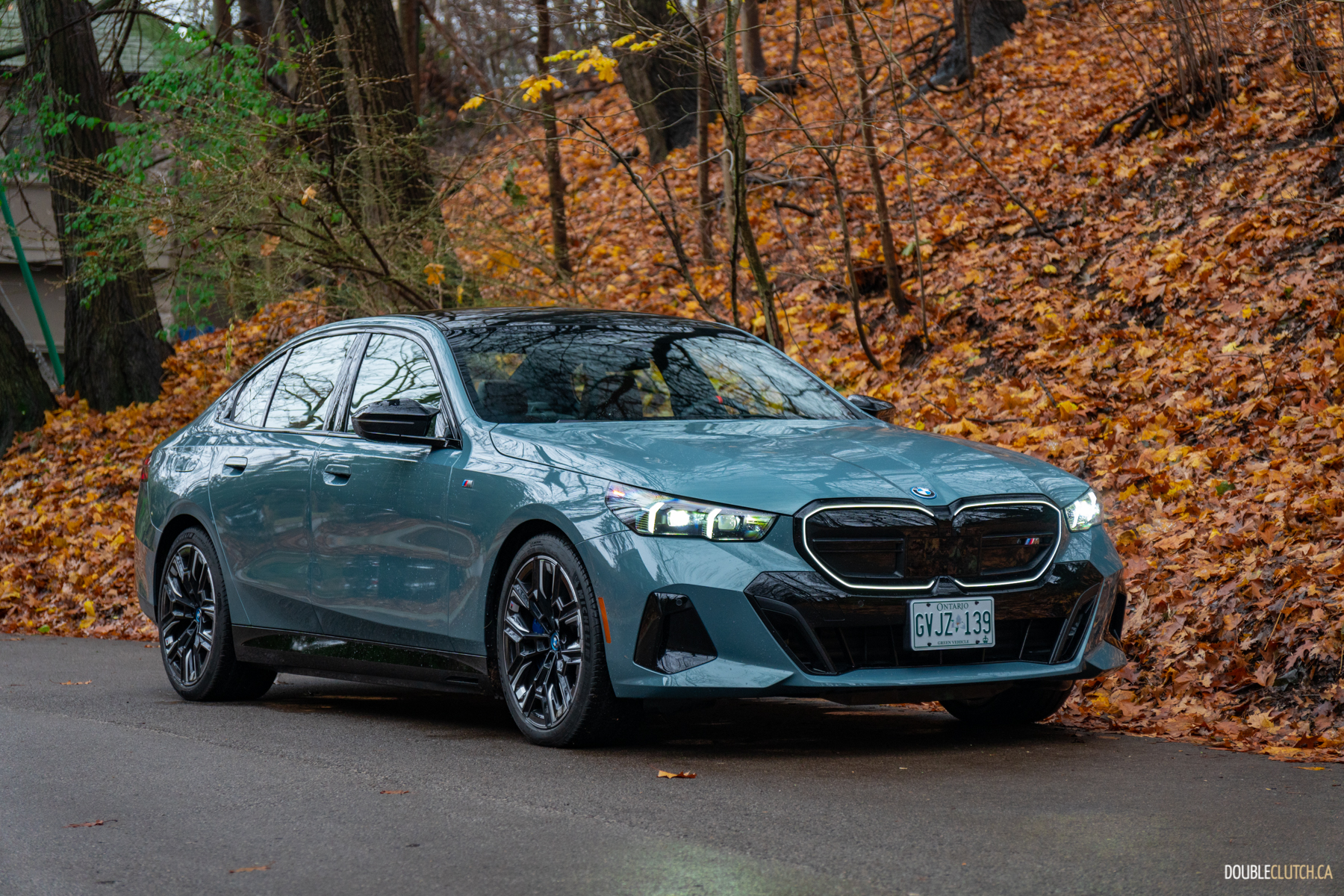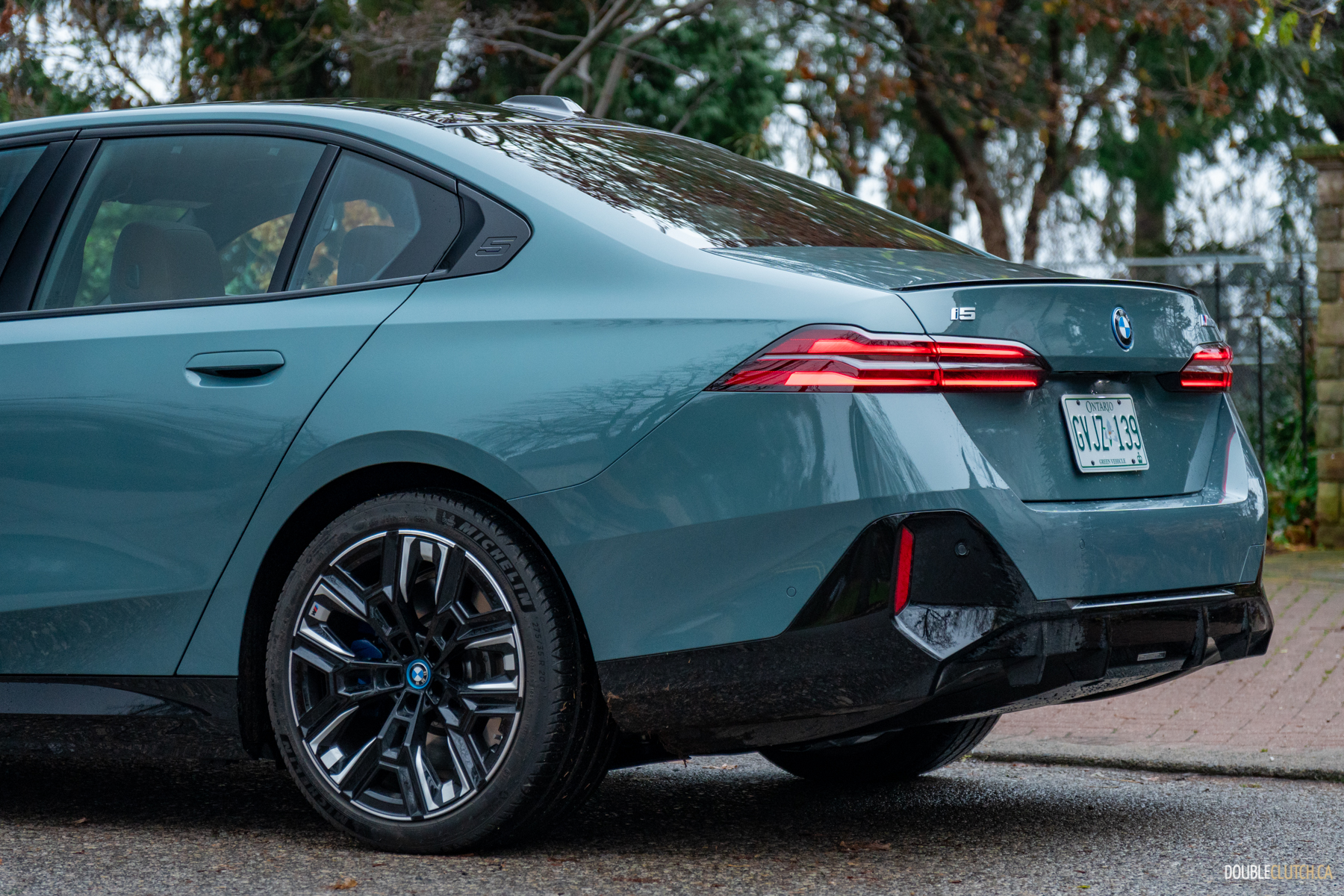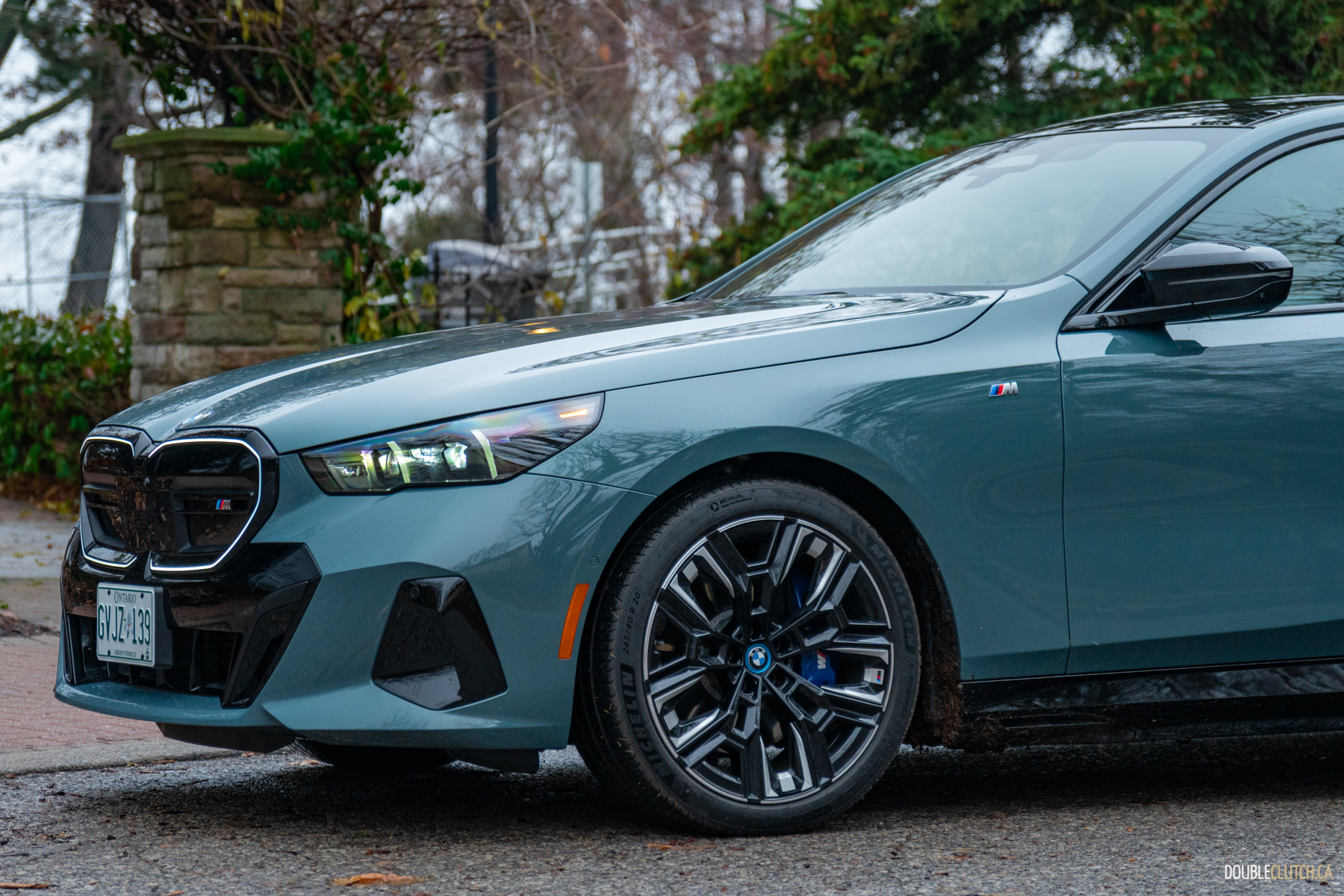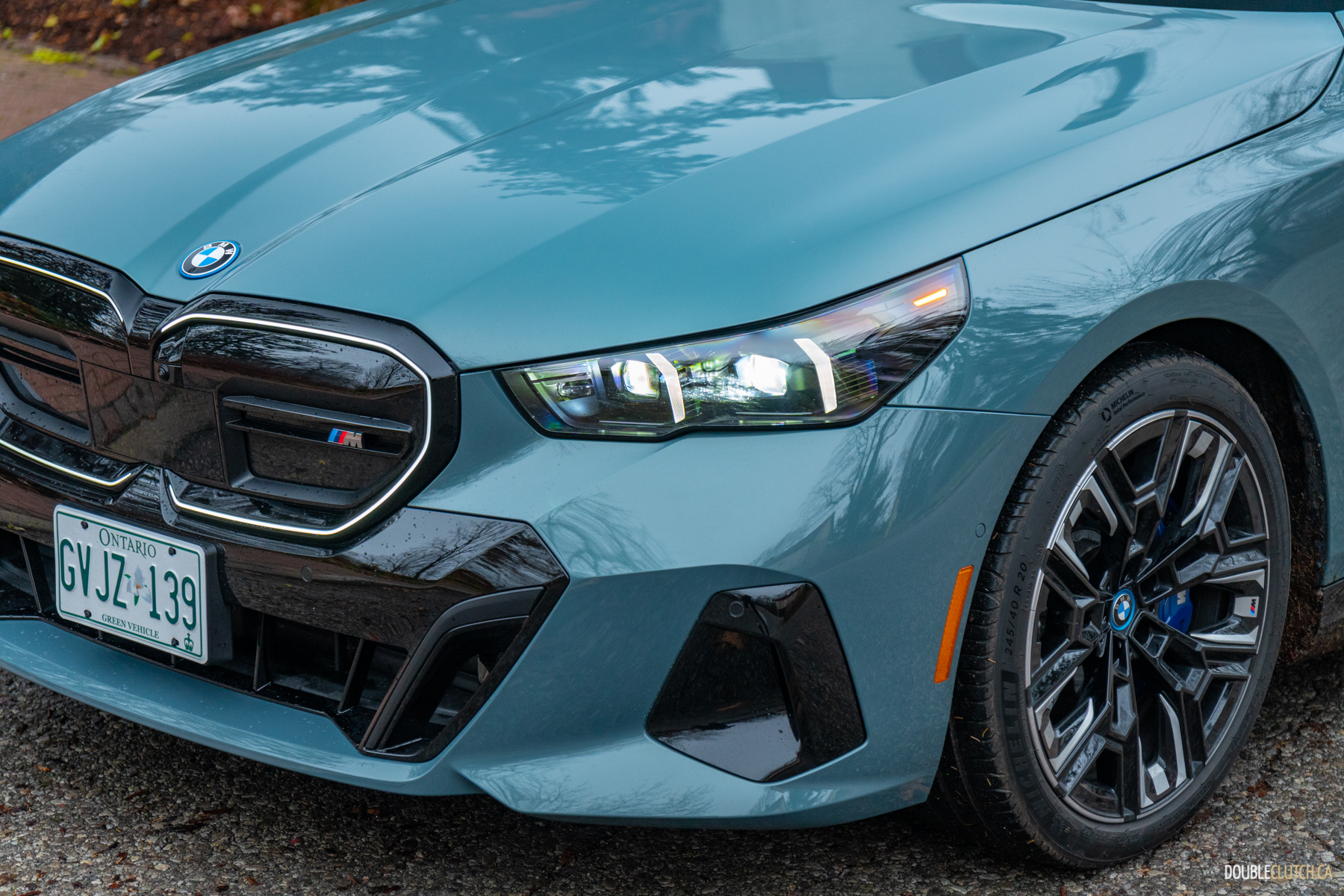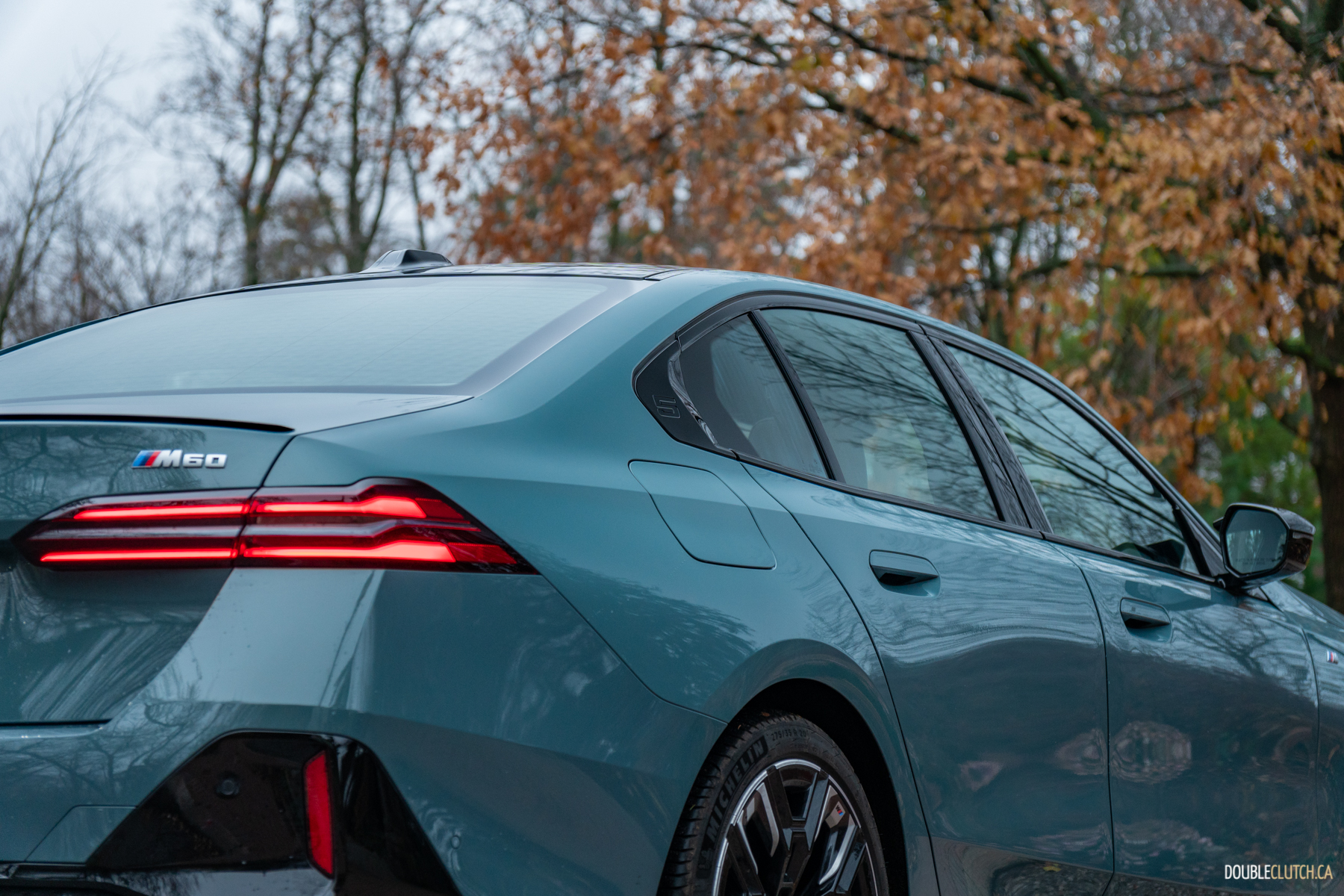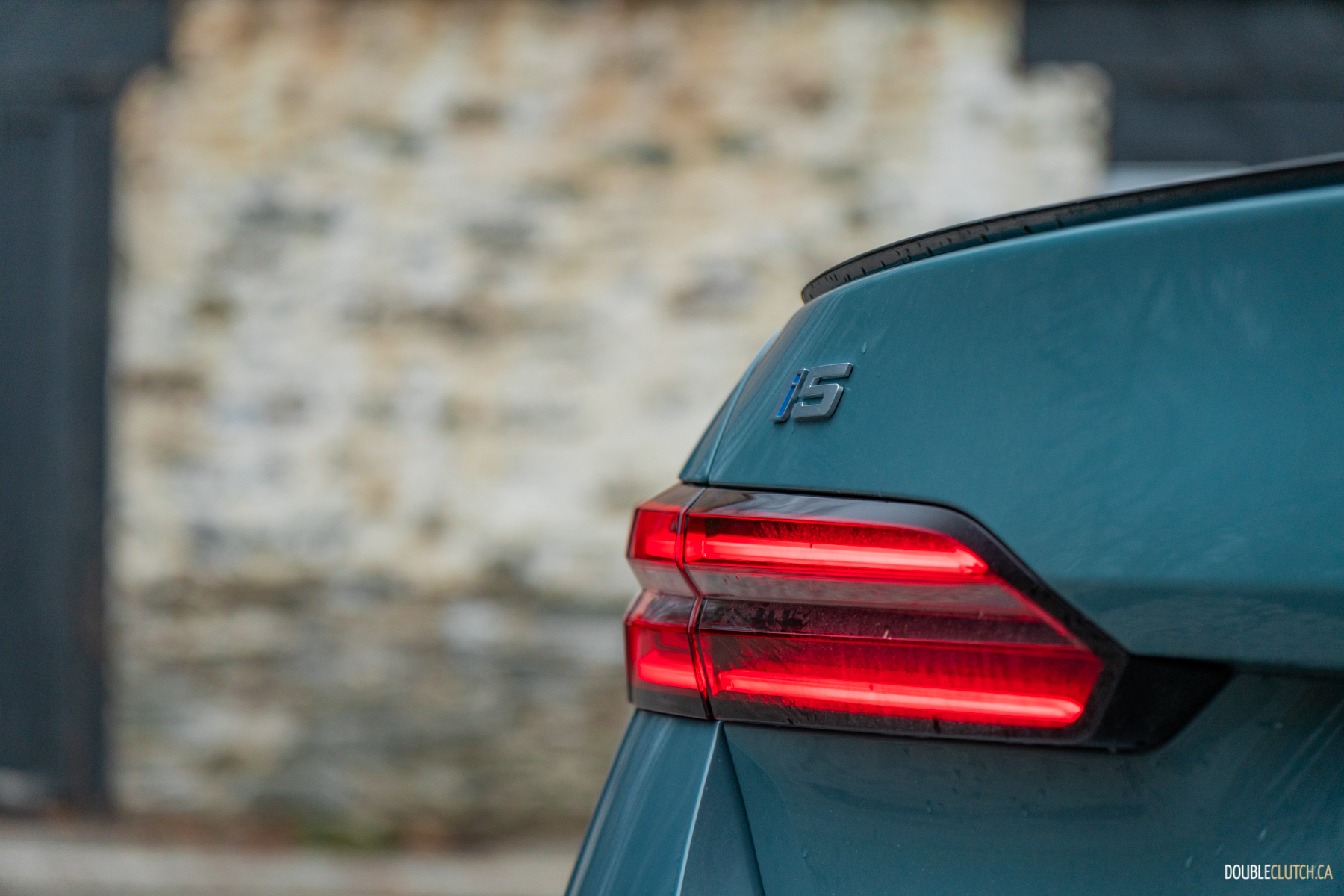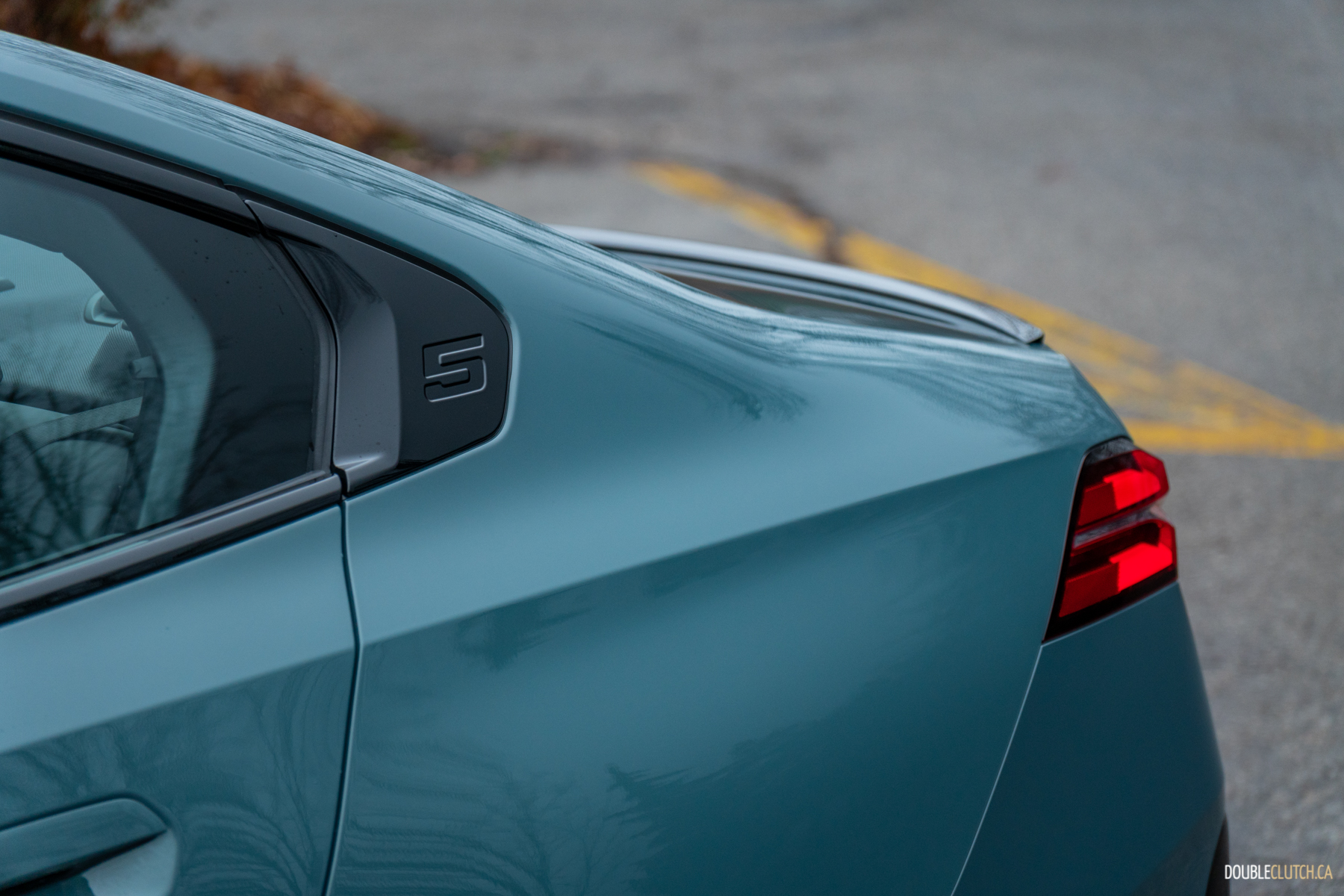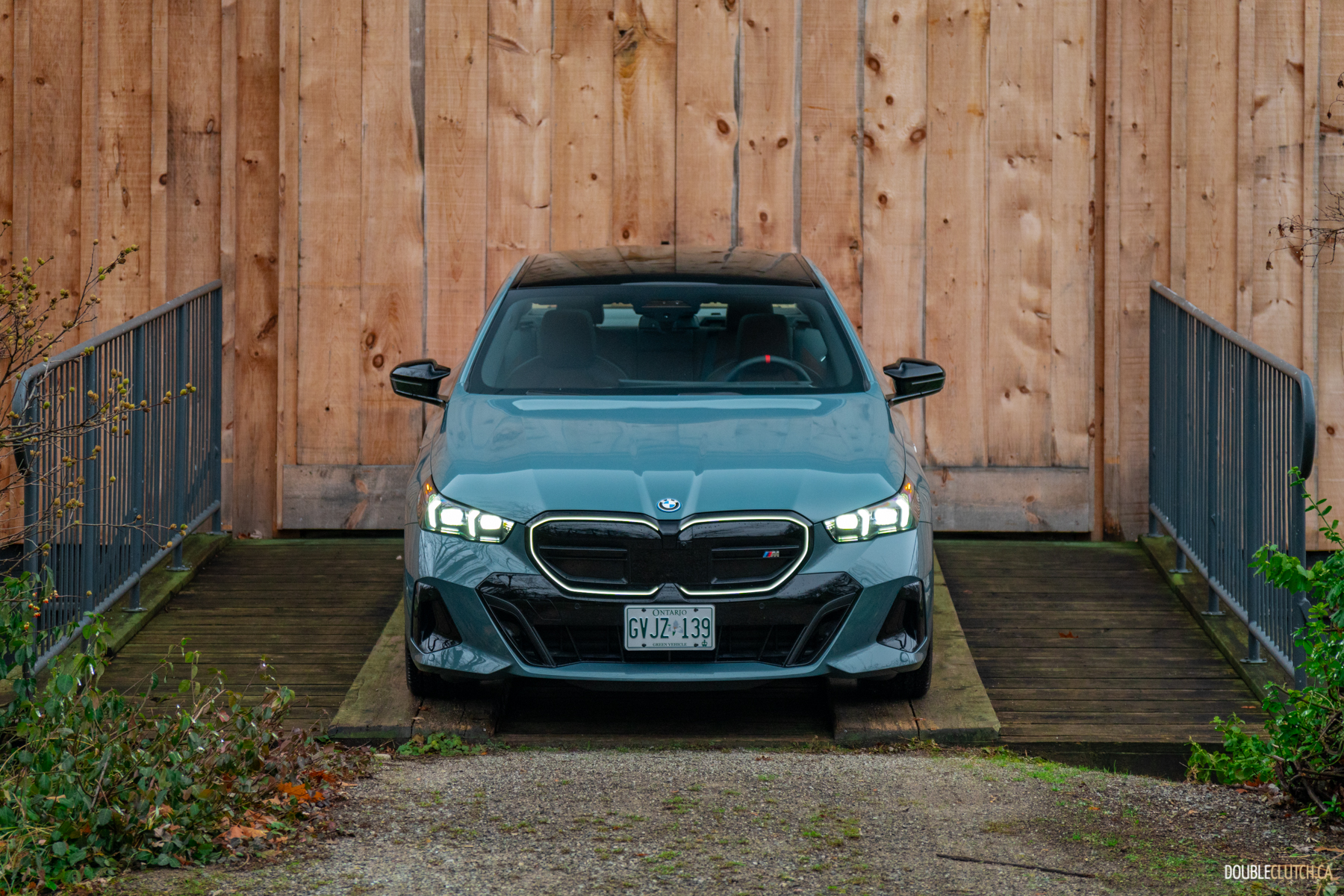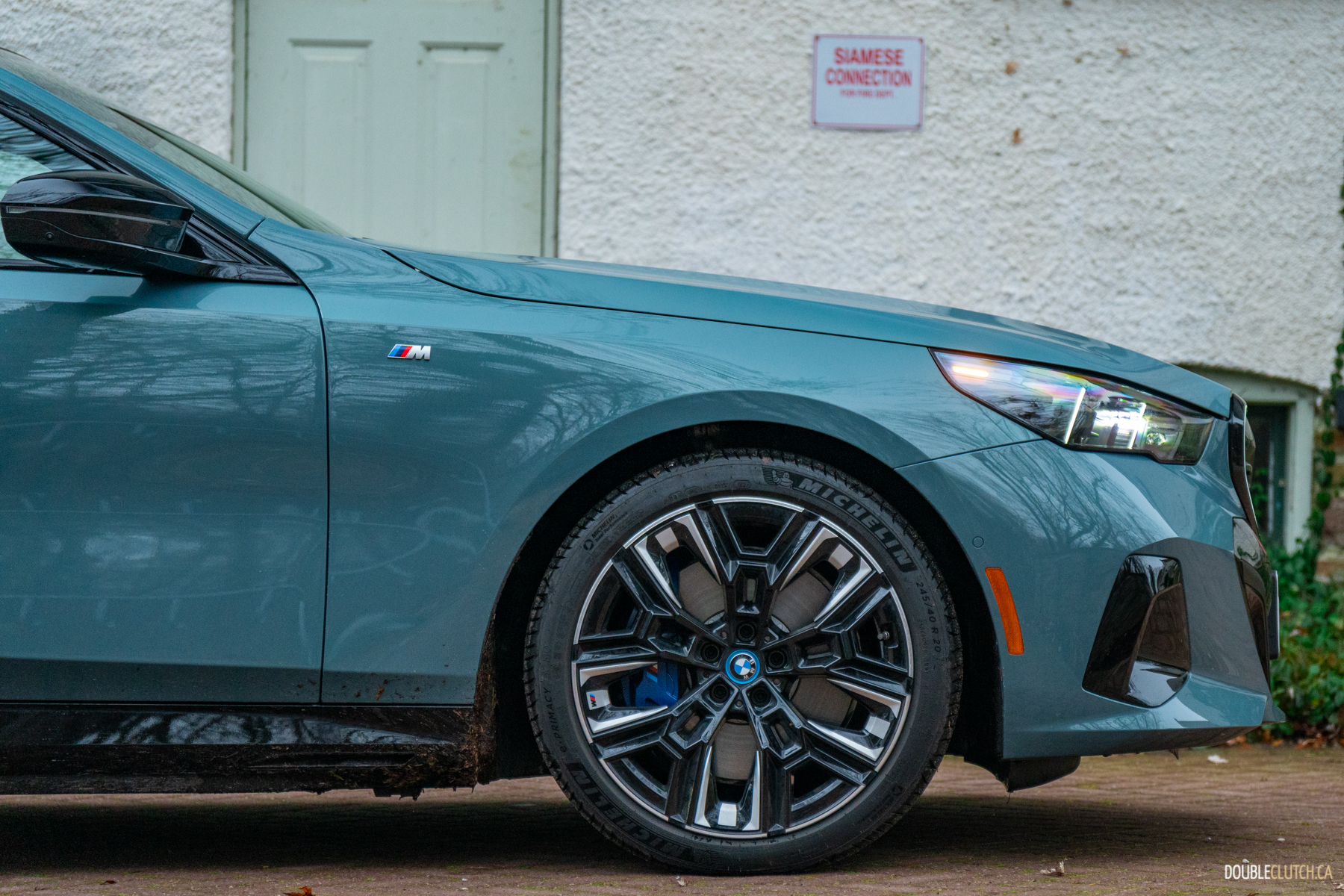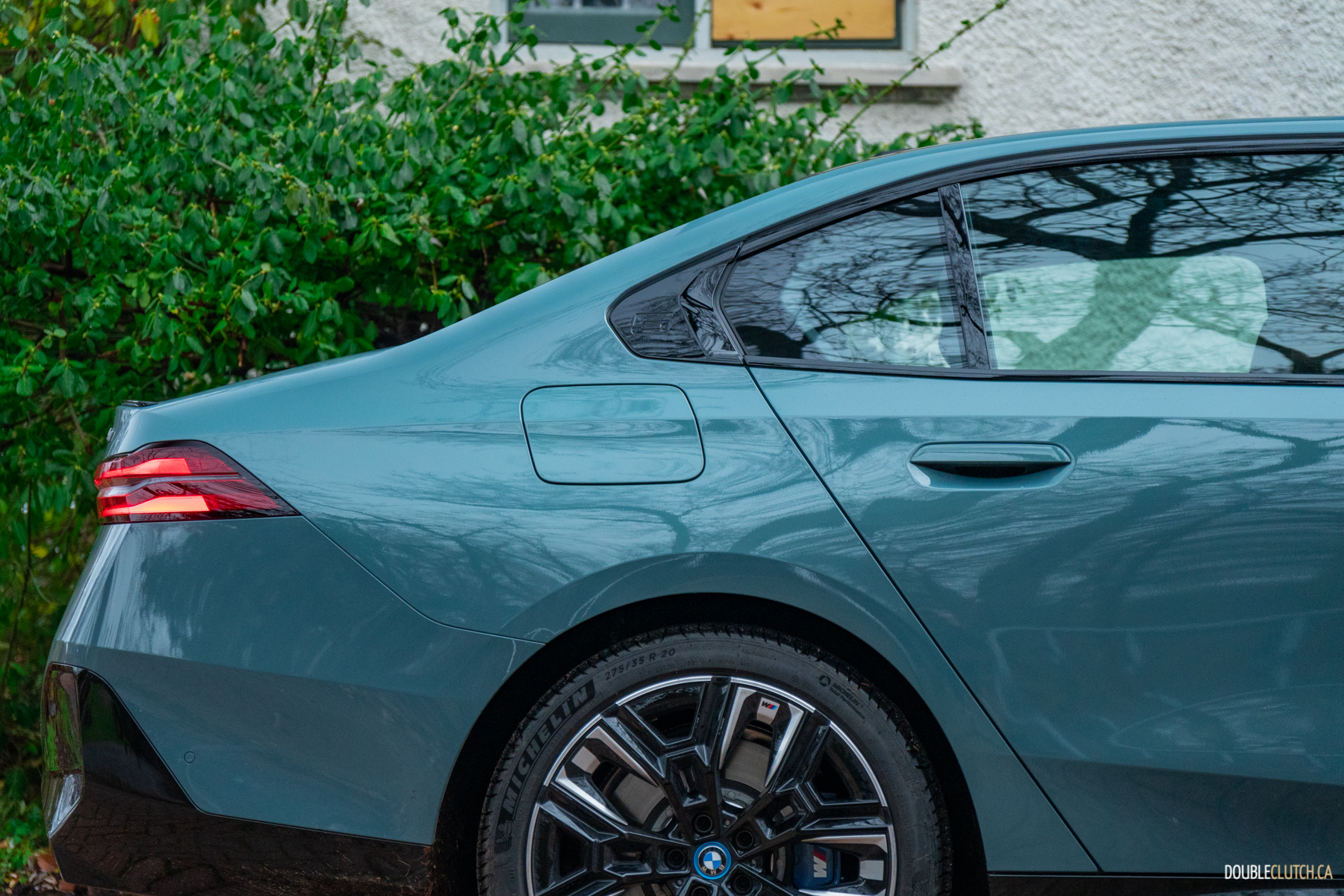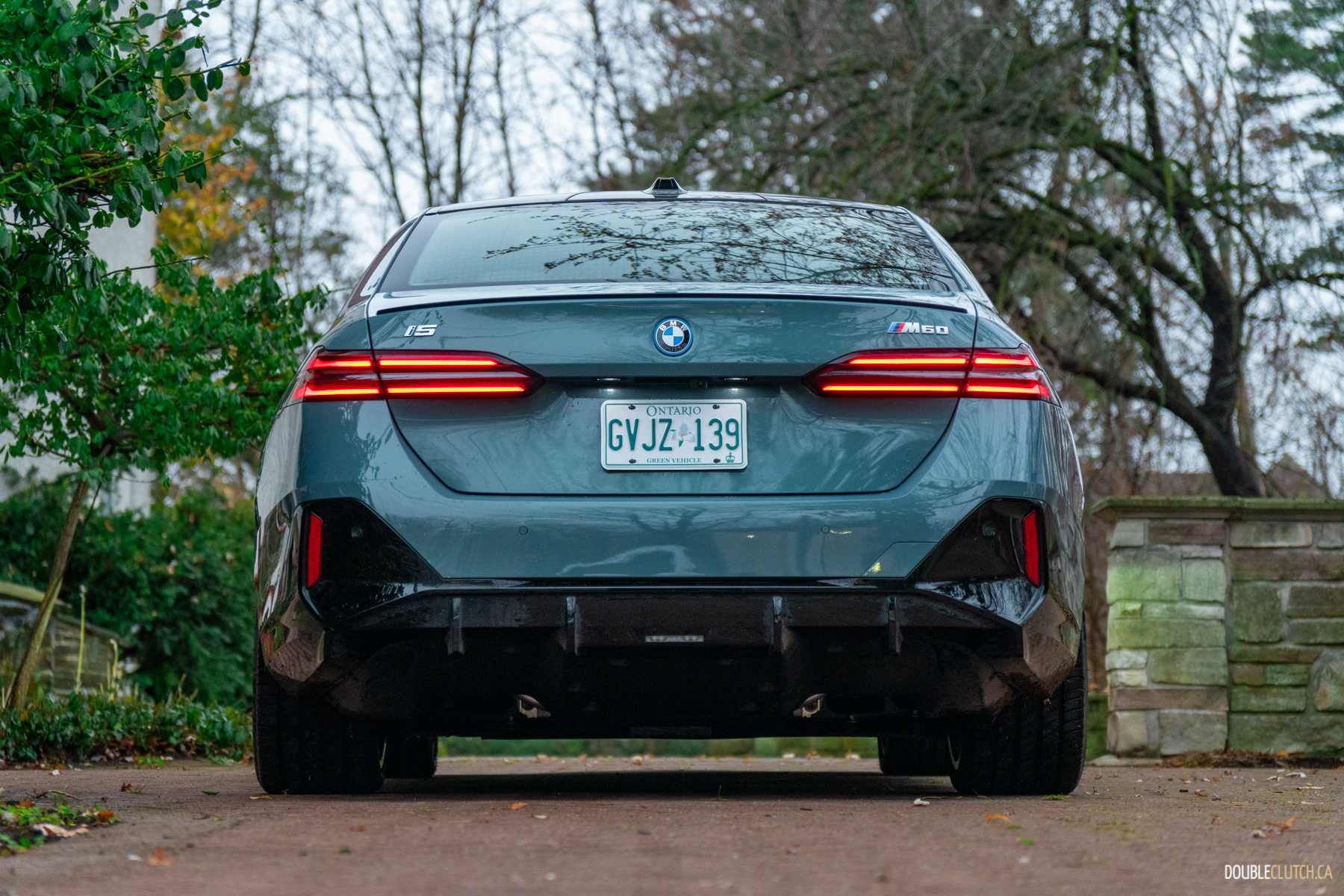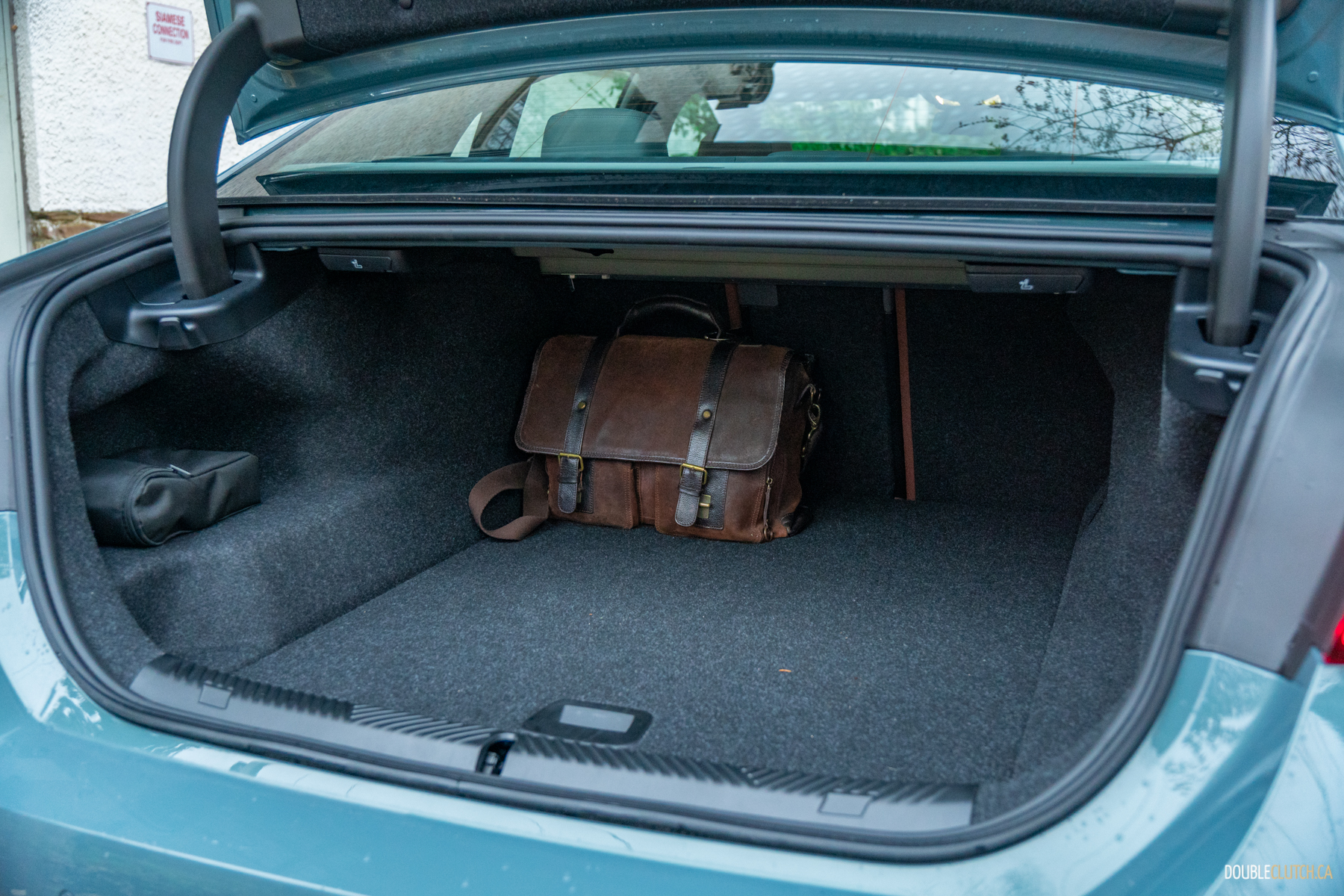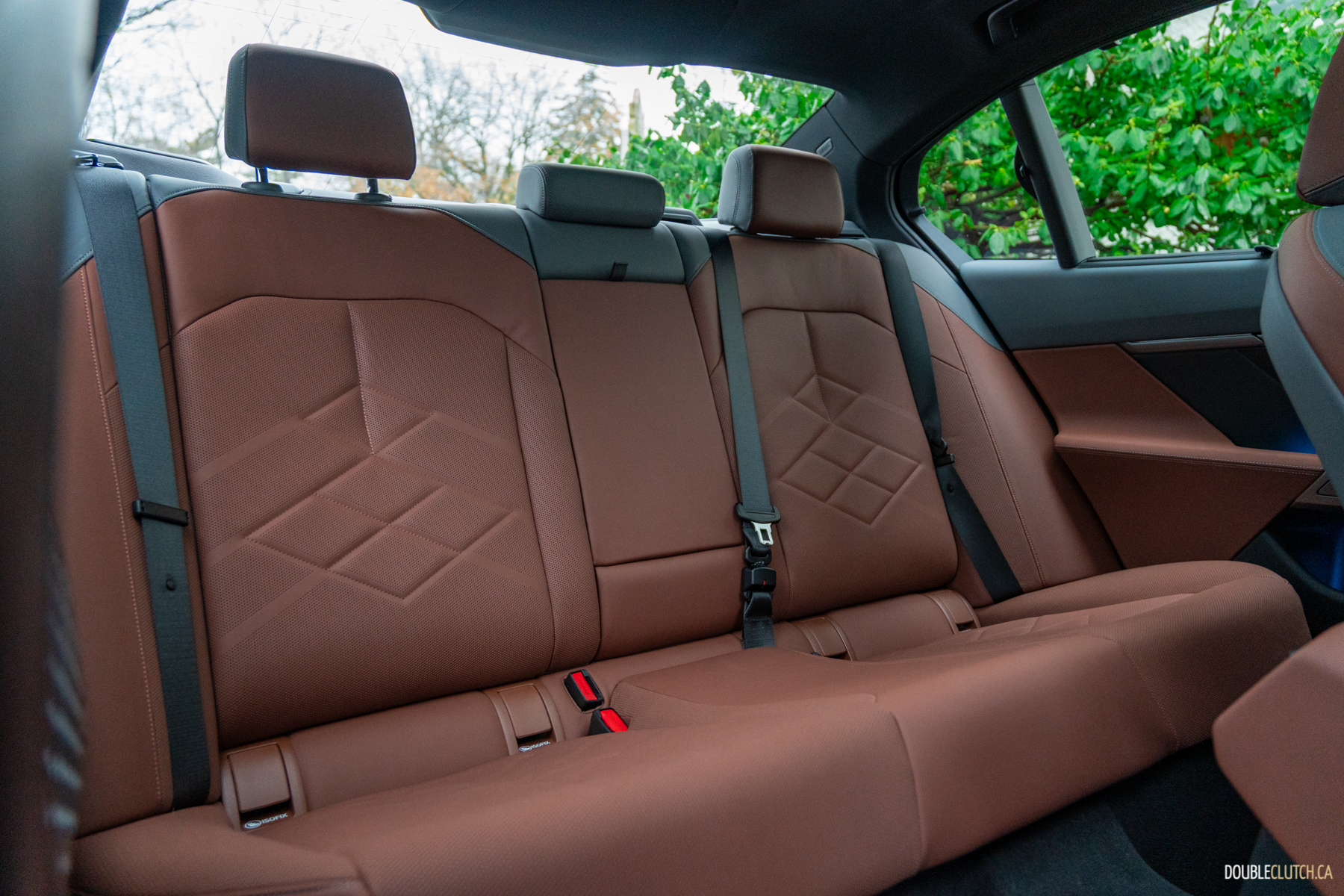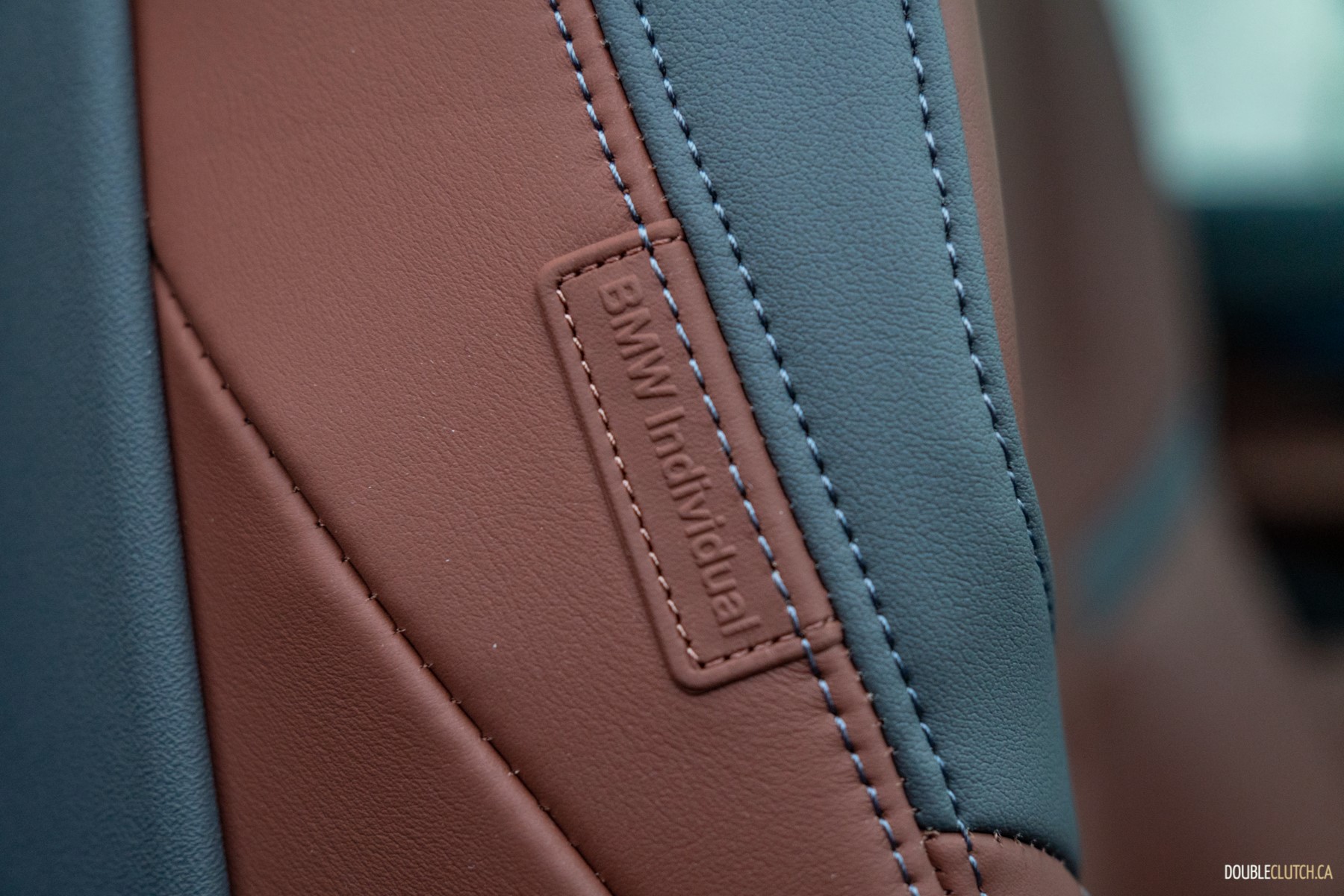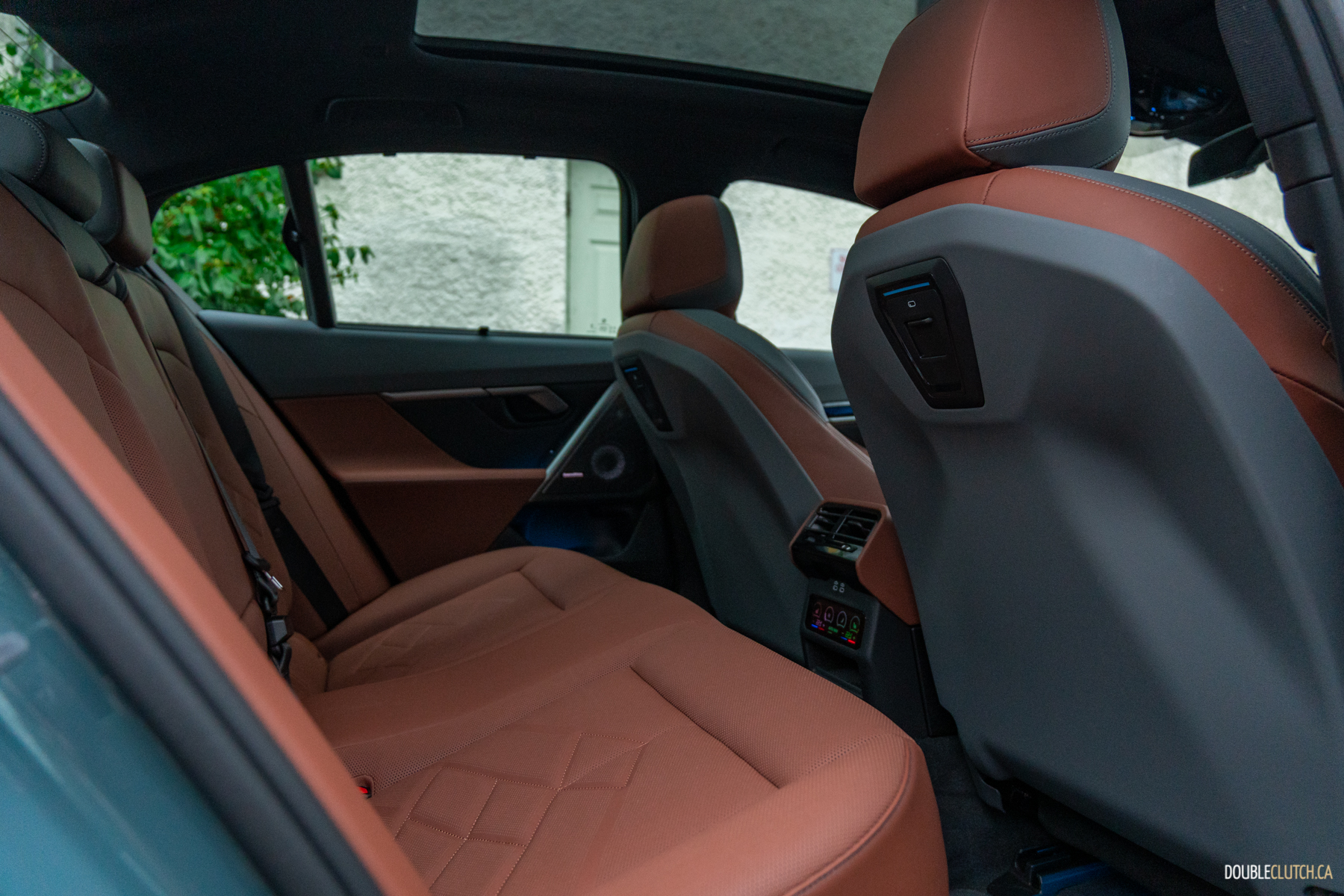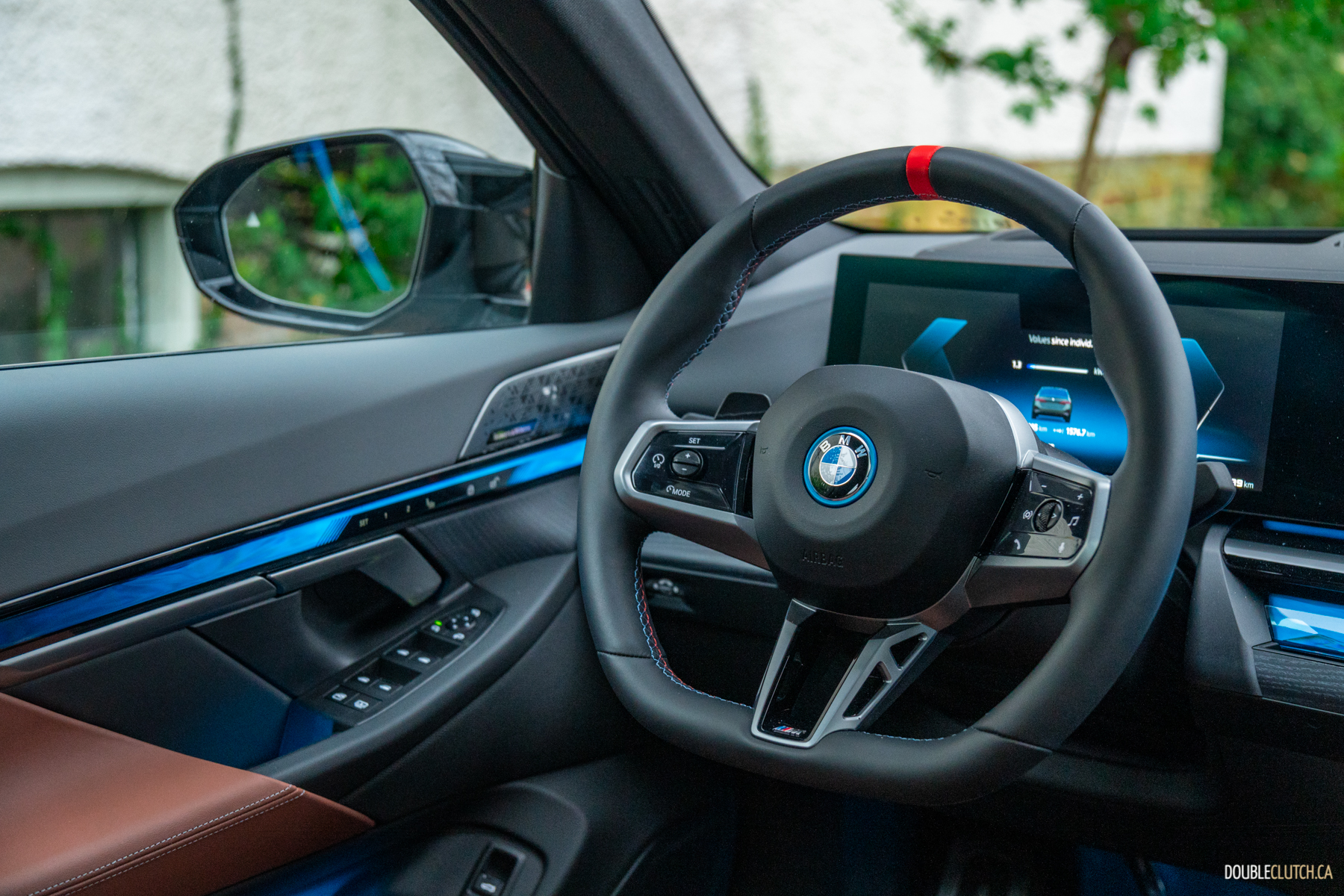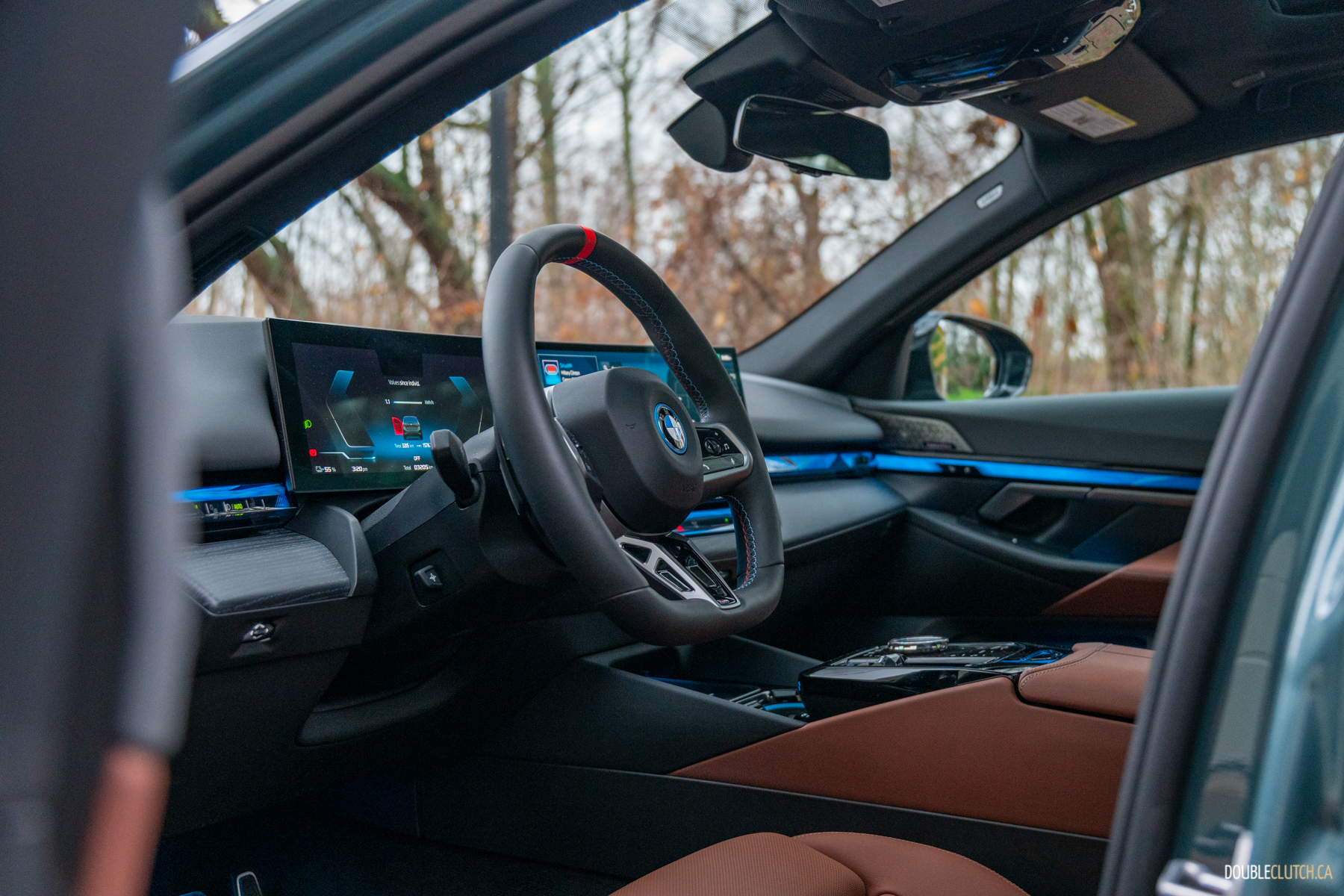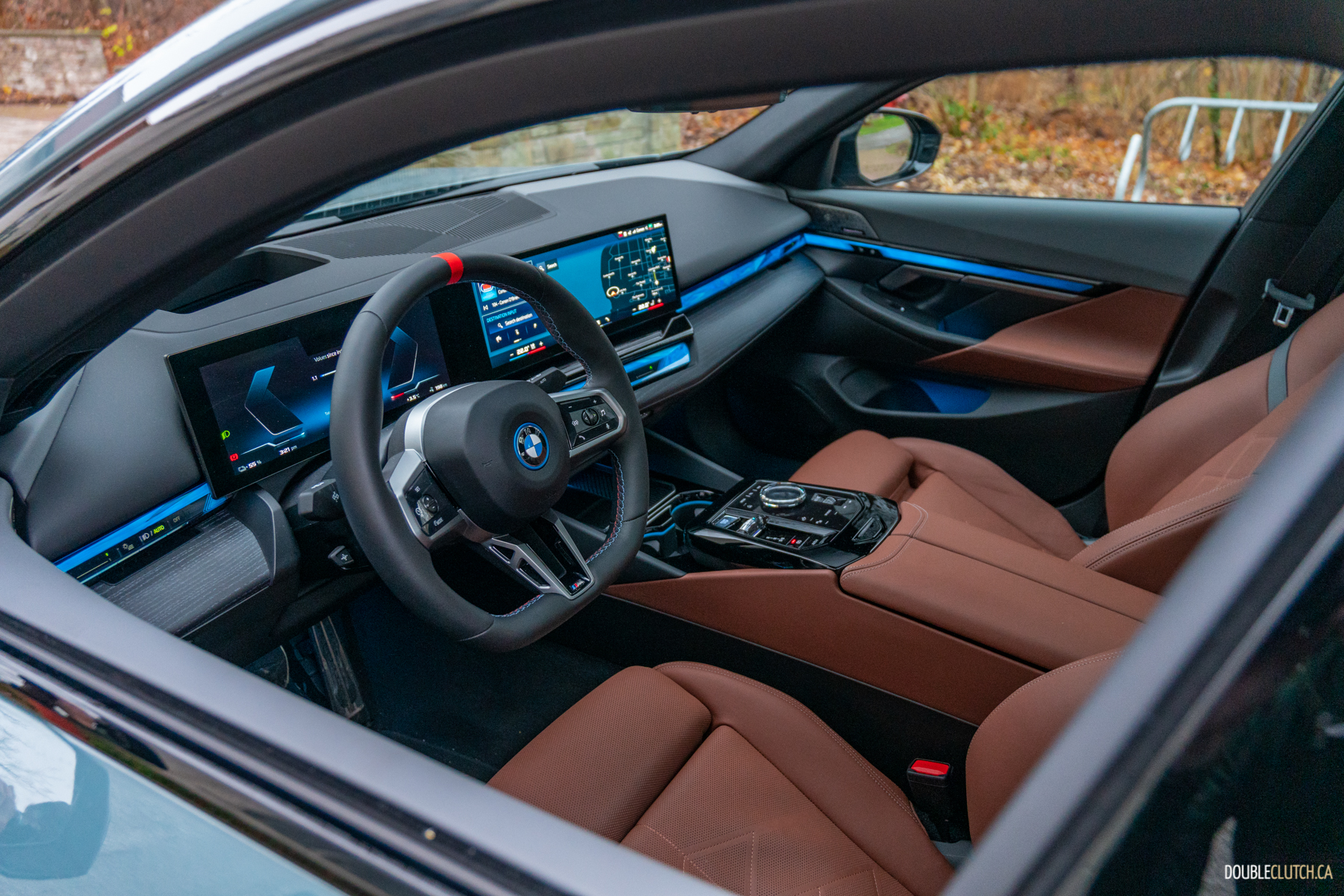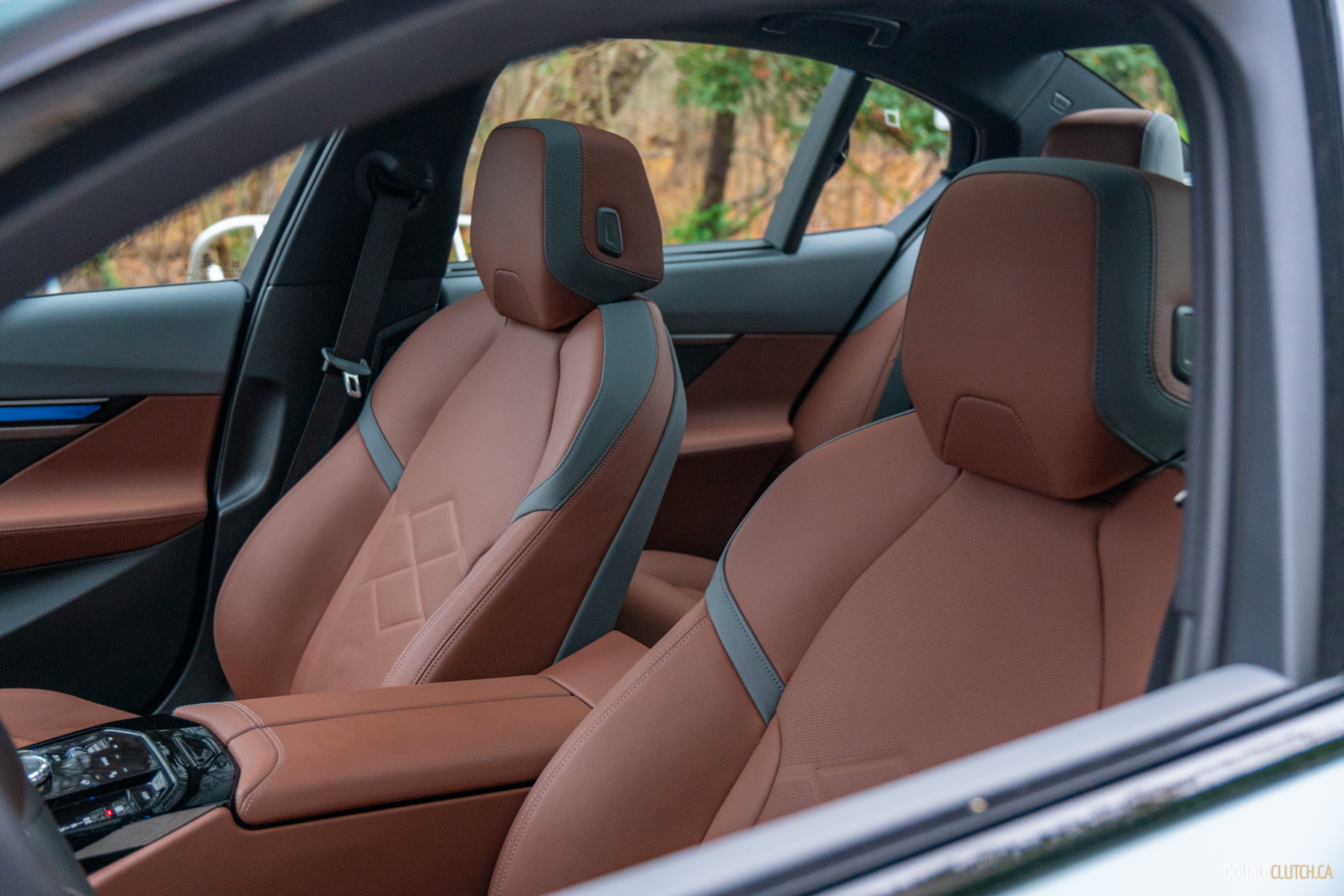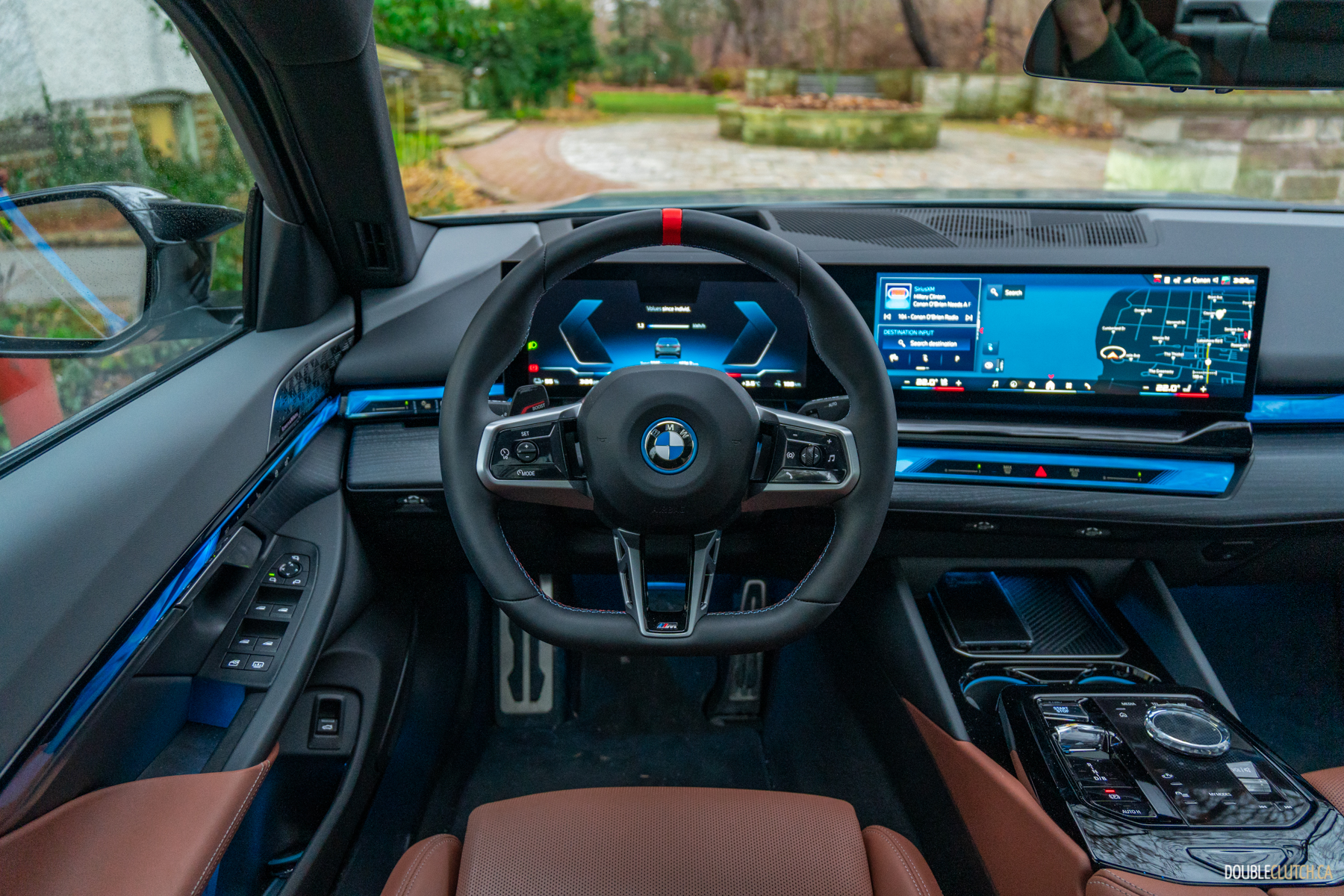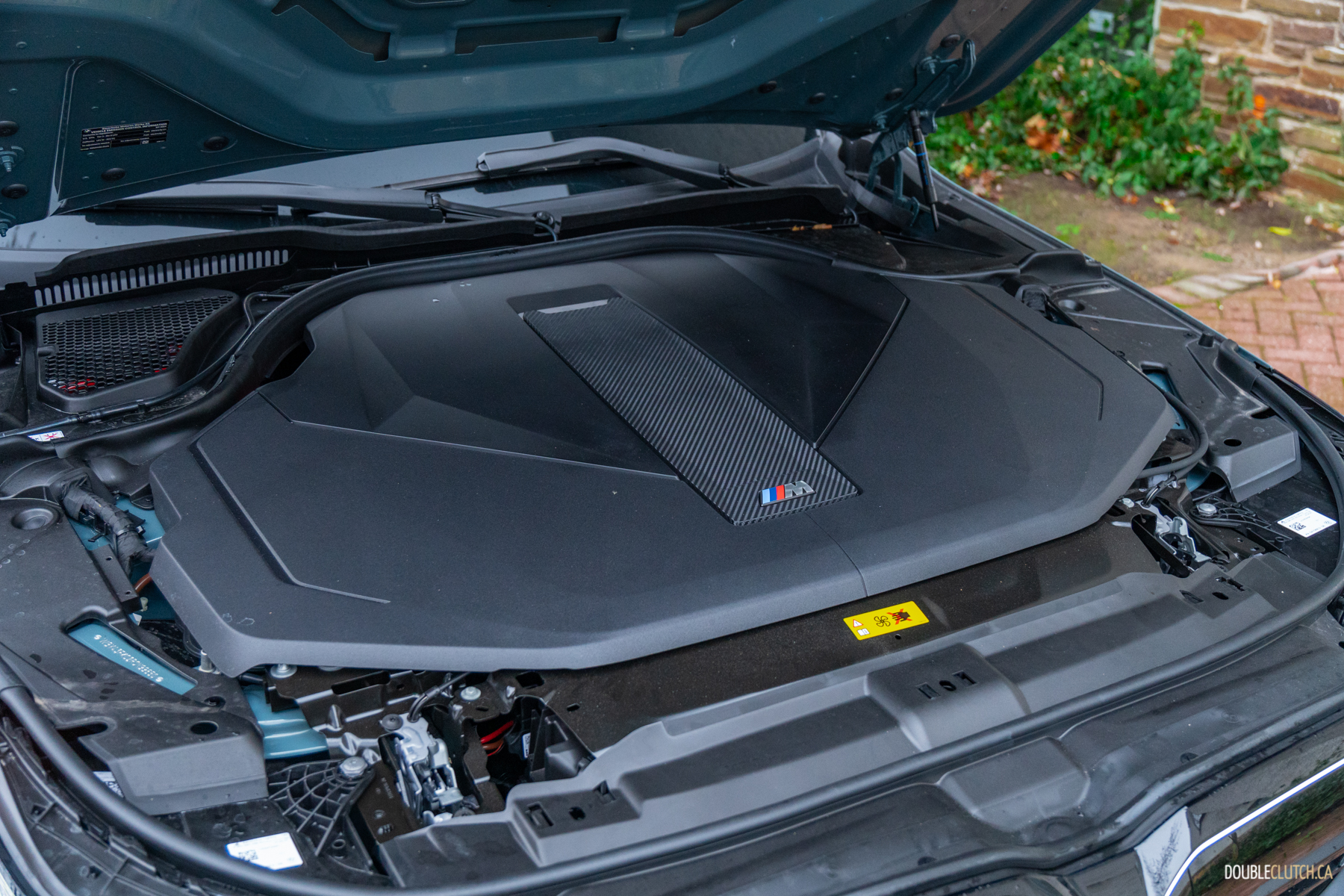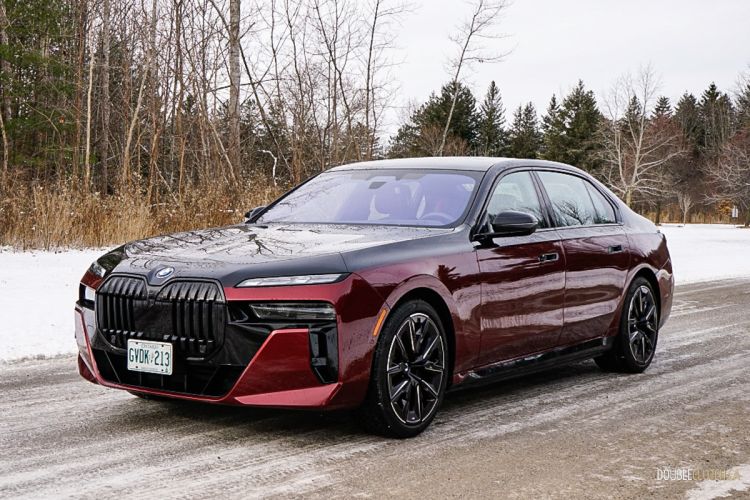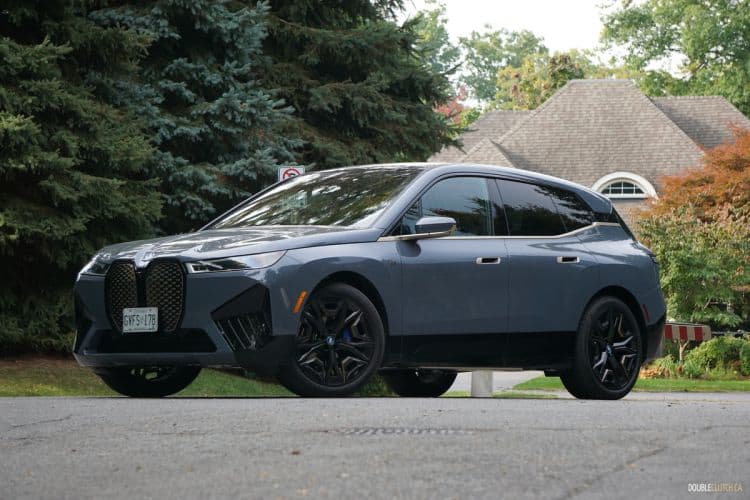I tend to avoid mentioning that I review cars, because the same few questions always come up. What’s your favourite car? What’s the fastest car you’ve driven? Whaddaya think about all these electric cars they got now? To this last one, my response is a carefully crafted non-answer to avoid politicizing the topic: I think EVs are a great fit for some people, but not everyone. The 2024 BMW i5 M60 is an interesting subject, because at least at the moment, it isn’t an alternative. It’s the only option if you’re looking for a fast 5 Series.
The 5 Series is BMW’s longest-running line of executive-class missiles, a succession of midsize sedans that blend style, sensibility, and above all, superb driving dynamics. Just a few years after its launch in the 1970s, it became the first BMW to wear the fabled M badge, and this grew into the legendary M5 that set the standard for what we now consider the modern sports sedan. The first M5 launched with a literal race engine that defined the car’s character, and it’s only gone up from there, getting increasingly frenetic and fire-breathing — until now.
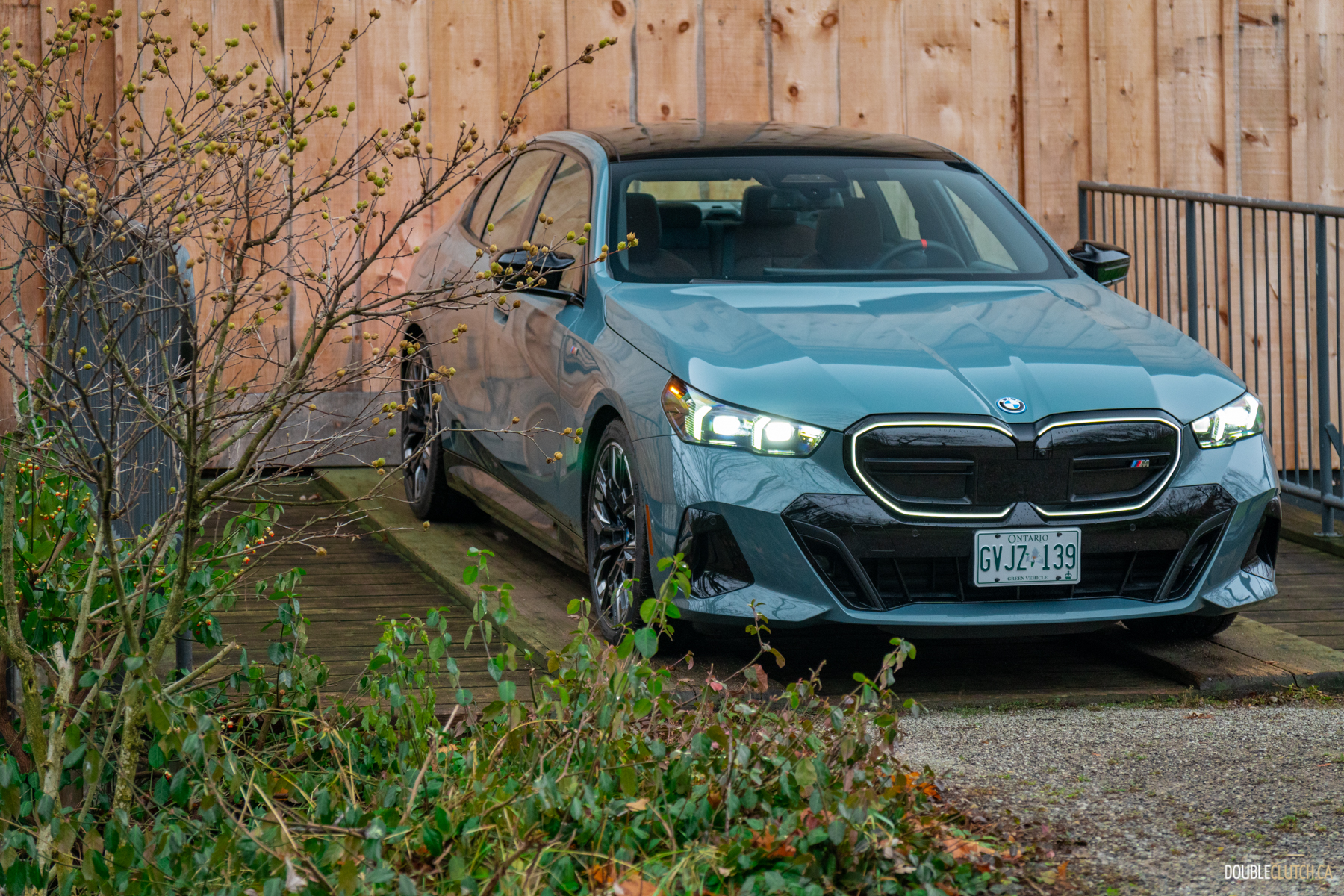
As of this writing, if you go on BMW’s website, build yourself a 5 Series, and select “M Models,” the only car that shows up is this electric-only sedan. There is a fire-breathing M5 in the works, and there is a 530i available now, but it’s an eco-minded four-cylinder hybrid — hardly the definition of a sports sedan. BMW’s been replacing M models with these “M60” cars as of late, so let’s work on the assumption that this electric-only i5 M60 is supposed to be an M5 in all but name, a harbinger of an electrified future where this other means of motivation isn’t so other anymore.
The i5 M60’s spec sheet reveals a vehicle with everything it takes to keep up with the BMW M division’s finest, even if it’s not turning refined dinosaurs into sound and fury. A big electric motor for each pair of axles generates a combined 590 horsepower and 605 pound-feet of instantaneous torque, able to hurtle this five thousand pound behemoth through the quarter mile in under 12 seconds.

An expensive EV being quick is old news, though. A BMW has to handle well; to that end, our i5 tester was fitted BMW’s Adaptive M Suspension Pro package, which melds a taut baseline chassis setup with adaptive shock absorbers and active sway bars. With four-wheel steering also pitching in to hide its heaping heft, the i5 behaves like the sport sedan it’s supposed to be. All this tech is translated to the pavement via 245 and 275-section shoes on the front and rear, respectively. But the big question is whether or not all this electro-pneumatic-hydraulic geekery actually translates into something that engages with you like a proper BMW on the road — and that is this car’s most impressive party trick.
It can almost be underwhelming at first. One of our fellow editors took it on a short trip to lunch before I played with it with it, and when I asked him how it drove, he only replied that “it’s exactly what you think it is, it drives like every other big BMW.” It pulls off the rare feat of feeling like a normal, well-thought-out, driver-focused car, in the same vein as the Porsche Taycan, Audi RS E-Tron GT, and BMW’s own i4.
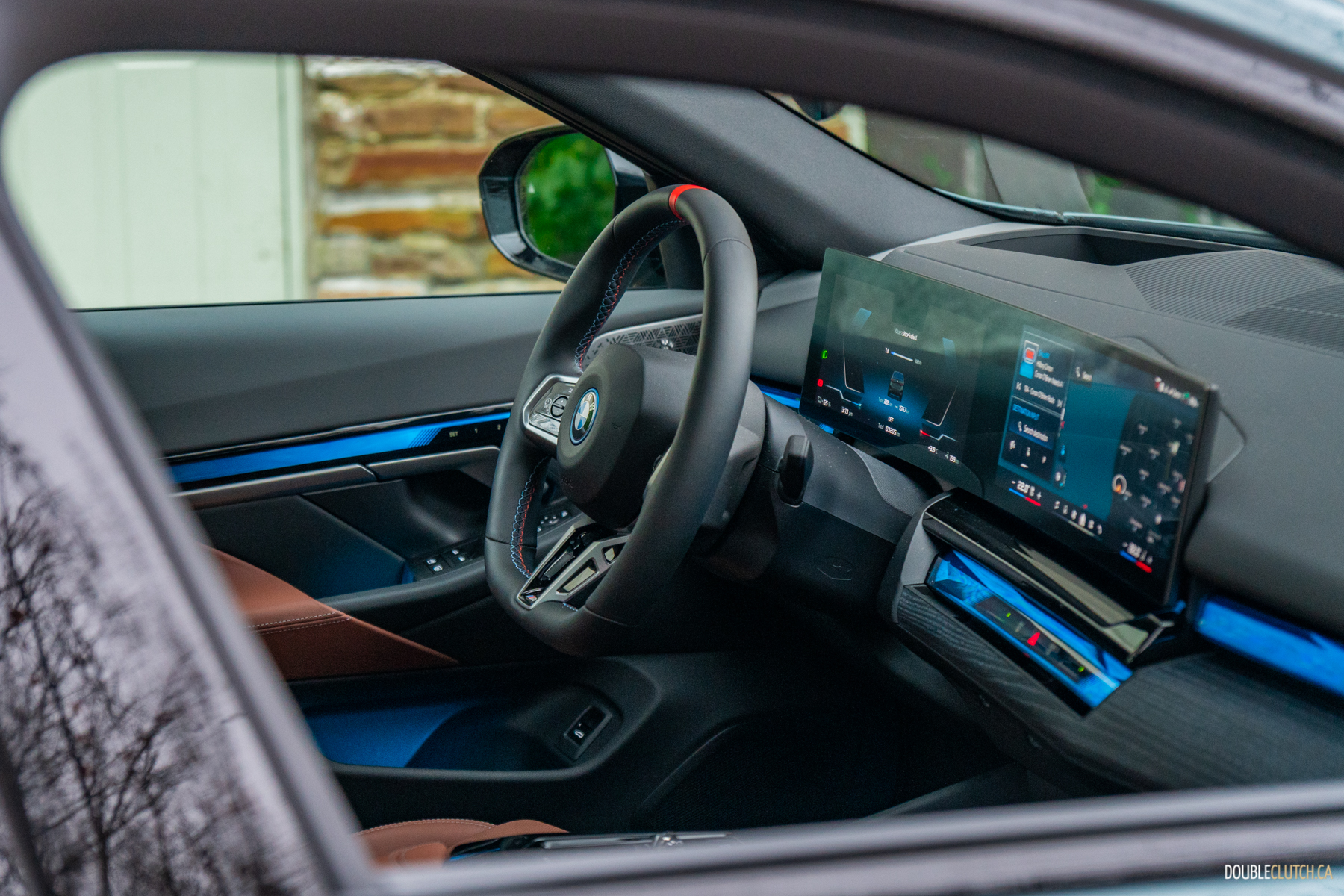
The steering is typical BMW — tight, linear, and communicative-ish, while also being pretty glassy. BMW has been working on that, and they’ve taken a cue that a few other makers are taking in slowing the steering rack down just a tiny bit for slightly more deliberate, organic feel. The chassis is in close cahoots with the steering wheel, using its techno trickery to seemingly shrink and provide eager turn-in, plus very impressive mid-corner grip and balance.
It captures some of the classic BMW corner-exit feel too. The i5’s brain quietly shifts power around to best put the massive power down, but always takes a distinct rearward bias and in doing so, gives the sensation that you can steer with your right foot as much as your hands. I say it gives the sensation because the i5 is so manically quick and is able to find so much grip, that getting it properly sideways (on the public roads, no less) would take an absolute madman.
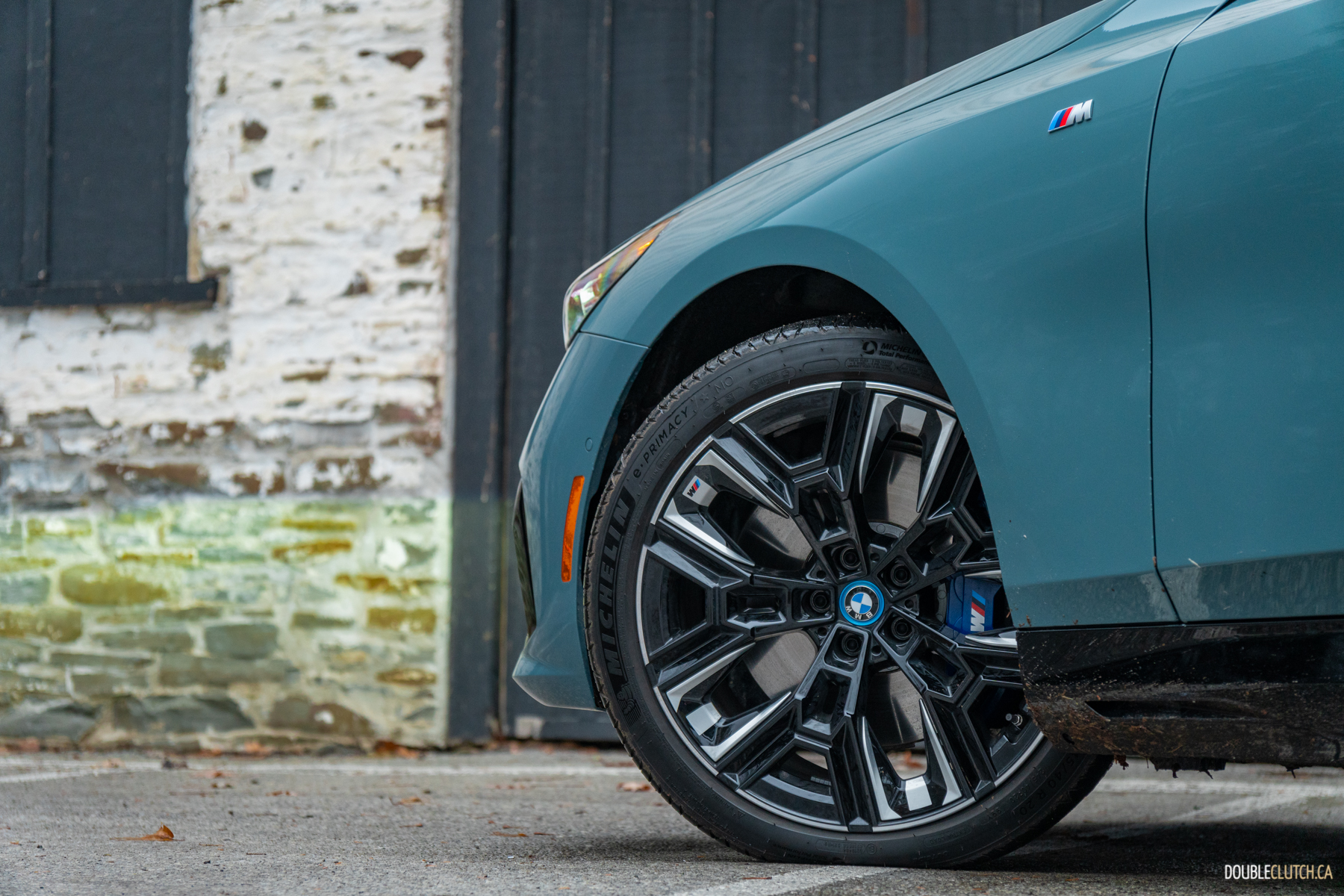
The biggest difference in the drive between the i5 and its gas-powered forebears is the response from the skinny pedal; there are few cars on earth with more urgent power delivery than this. Don’t get me wrong, it doesn’t feel overpowered or awkward. There’s just so much and it’s bewilderingly quick to answer your twitchy ankle. To be clear: BMW’s latest crop of hybridized and turbocharged performance engines are the best in the business, and the ZF eight-speed automatic gearbox that’s been behind them for a decade is an as-yet-untouched miracle of engineering. They work together harmoniously to deliver seemingly instant power, but the chasm between seemingly instant and actually instant is enormous. It makes navigating out of a fast corner remarkably satisfying.
The i5 isn’t just satisfying to drive fast, though. This new, significantly bigger 5er does a damn fine job impersonating a limo, soaking up every act of aggression and targeted question the road has for you. To no one’s surprise, wind and road noise levels are suitably negligible, although not quite as surreal-and-silent as the big i7. Speaking of, the i5 borrows some inspiration for its cabin design from its bigger brother, with some shared cues on the dash and doors, chiefly in the form of an illuminated capacitive control strip and new dash layout.
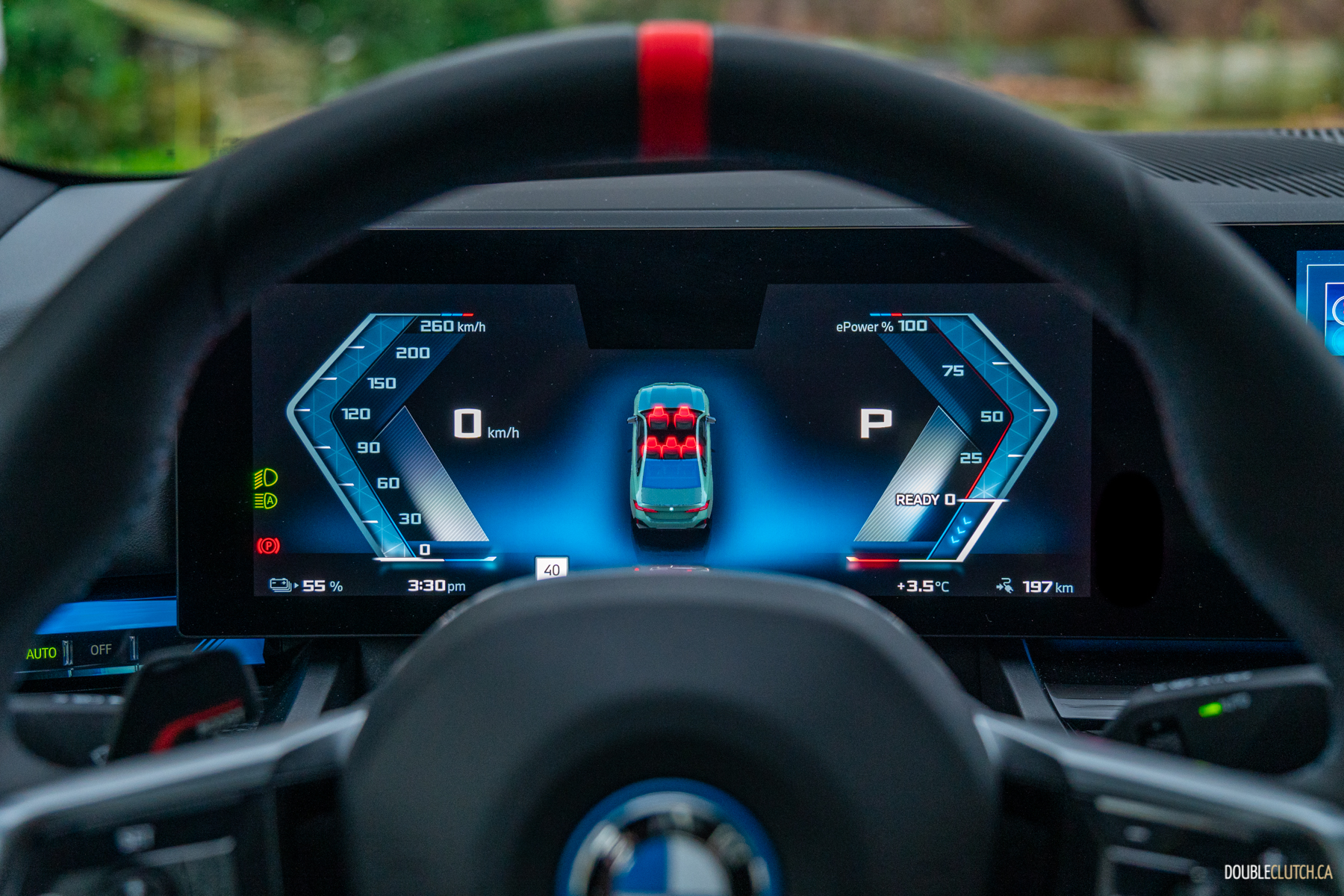
The new dash layout more elegantly integrates BMW’s corporate ultrawide curved display, housing a 12.3-inch gauge cluster and 14.9-inch touchscreen running iDrive 8.5. It works as wonderfully here as it does in the rest of the latest crop of Bimmers, and it’s well-matched to the Bowers & Wilkins sound system. There’s plenty of head and legroom up front and out back, but while the seats are otherwise excellent, they lack the upper back adjustment I didn’t know I loved until I drove the 7 Series.
Our tester’s interior was tailored in a two-tone Atlas Grey and Copper Merino motif, trimmed with matte Grey-Blue Ash wood and glass controls. It’s a very classy look, but the exterior is a curiosity. Not because of the beautiful Cape Jade paintwork, but because of the i5’s strangely conservative styling — it roundly rejects the big-sniff schnoz on the 4 Series and the striking split nose from the 7 and X7.
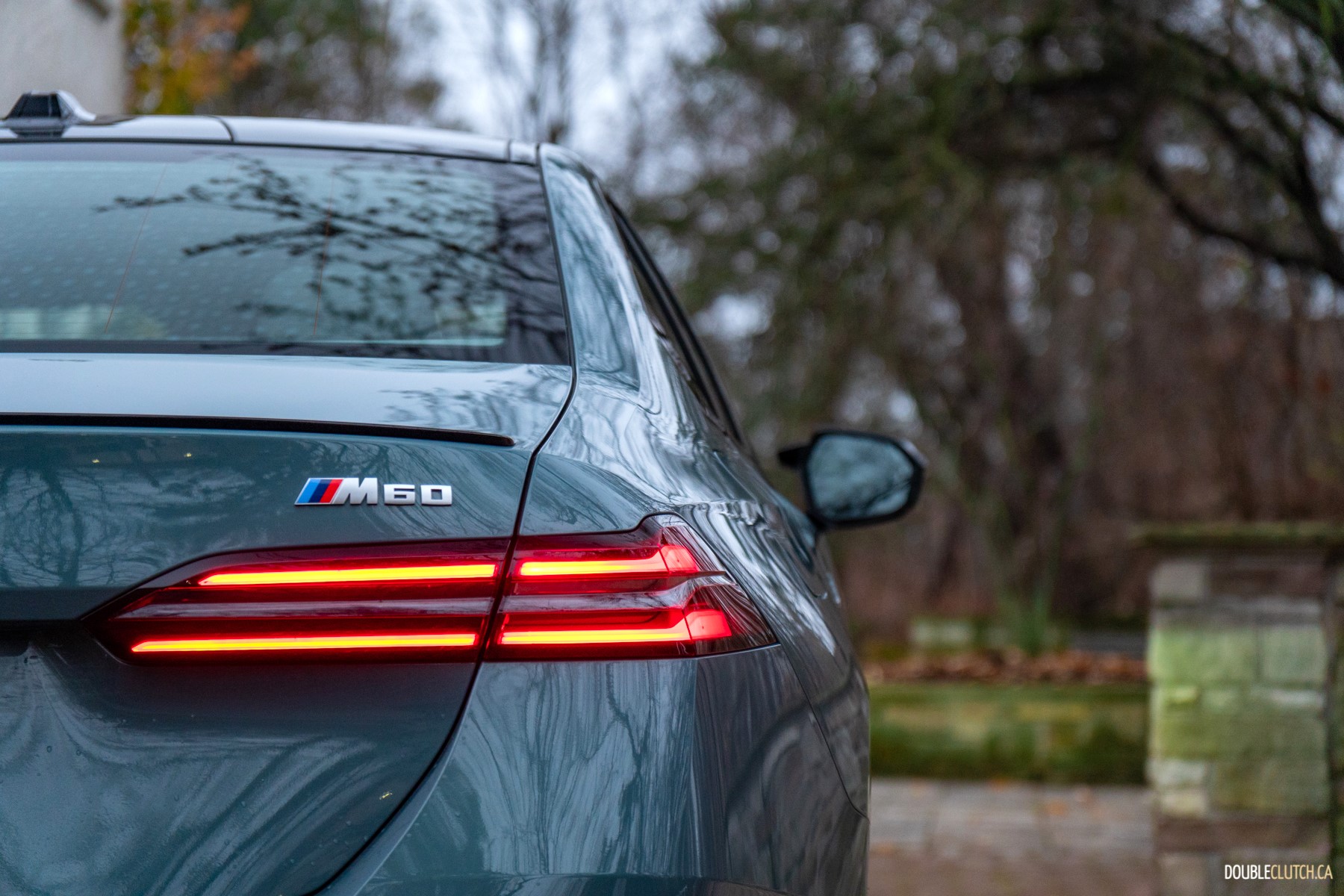
This isn’t the first time BMW has used the 5 Series to backpedal into a more traditional design language. Maybe it’s a response to the droves of criticism, or maybe it’s an honest expression of style that signals things to come. It’s hard to say, but either way, it’s very interesting to see BMW move in this direction after publicly doubling down on their more contentious designs over and over again. All that aside, I think the front fascia works, the profile looks great, and I’m thrilled to see the Hofmeister kink persist, but I’m not entirely sold on the rear yet. It’s simultaneously a little too busy yet a little too anonymous. You decide.
You’ll also have to decide if the max range from its 84.3 kWh battery pack is gonna cut it. Its size is slightly compromised by it not being a dedicated EV platform, so BMW claims 412 kilometres on a full charge. Tat falls short of the 450-500 kilometres of range we’ve come to expect from this calibre of car, but it certainly isn’t bad by any stretch, and I have half an inkling to believe BMW’s pessimism with numbers as a whole means in reality, it may very well end up being roughly comparable to its competitors.
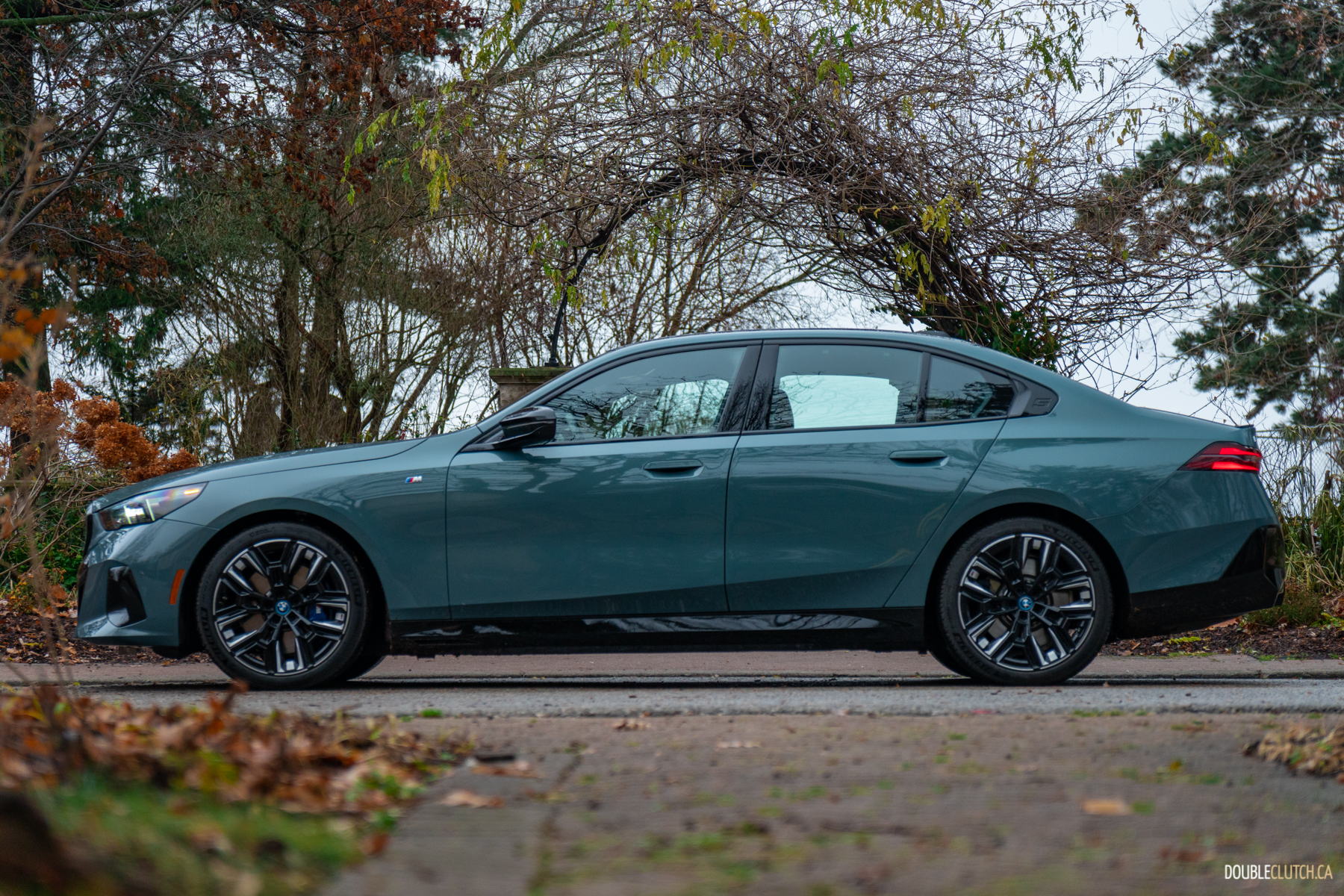
I’m not even sure what those competitors are, to be honest. The most obvious one is the Mercedes-Benz EQE AMG, and you could make an argument for the Tesla Model S, but I wouldn’t. Both those cars are extremely tech forward with very EV-ish styling, driving dynamics, and usability; whether or not you like those things is up to you. The i5 is slightly more conventionally handsome, with both big sedan practicality and comfort in a package that doesn’t alienate, and with the driving dynamics of something akin to Audi’s sensational (and sensationally priced) RS E-Tron GT sprinkled in.
I know it sounds like a ridiculous statement to make, but at $112,850 as-tested, the 2024 BMW i5 M60 is almost a value proposition among its contemporaries. Whether or not it’s a worthy replacement to something like the M550i we universally adored so much around the office last year is a tough call, and I’d be lying if I didn’t say I’m eagerly awaiting the arrival of the fire-breathing dragon that is the next M5. But I’m reminded of something that came up with with the outgoing M550i: we all agreed the previous-gen M5 is too fast for its own good, and M550i was the sweet spot. There is a non-zero possibility this brilliant i5 M60 just might create that same opinion and be the sweet spot in the lineup again.

